The ABAA New York International Antiquarian Book Fair returns to the Park Avenue Armory in New York City from April 4-7, 2024, for its 64th Edition. Here are some of the highlights that exhibitors will be offering at this year's Fair!
[Lincoln Funeral Car] Decorative Wood Panel with State Seal of Delaware.
.JPG)
7-1/2” x 10” x 1-1/2”; 2-1/2” metal connecting plate with screws on each side; dowl opening from top to bottom.
Though in rough condition, it nonetheless carries emotional solemnity and significance as a witness to the Lincoln funeral journey, for it lay watch over Lincoln’s coffin for the entire twenty days. Though a bit dulled, the panel still easily shows the seal for the State of Delaware; the panel must have aged gracefully, along with the car itself.
The railroad coach that carried Lincoln’s body from Washington to Springfield for twenty days in April 1865 was originally built as a private railroad car -- a “presidential coach”-- named The United States, for the use of the president and his cabinet. When the car was completed in early 1865, it had been more than a year in the making, and with its upholstered walls, wood paneling, decorative painted panels, and etched-glass windows, it was one of the most lavishly appointed railroad cars ever built. Its 16 broad-tread wheels could travel over nearly all gauge railroads, and its sides were ironclad, with armor-plating between the outer and inner walls. The car was 42.5 feet long and 8.5 feet wide and had a newly developed heating system. It contained a stateroom, a sitting room, and a sleeping apartment. In the stateroom was a 7-foot 6-inch sofa built to accommodate Lincoln’s 6-foot 4-inch frame. The coach was said to have cost $10,000, more than three times the cost of a standard passenger car.
But, Lincoln never used it while alive. Immediately after the assassination, the car was refurbished to allow for Lincoln’s coffin to be transported for burial in Springfield.
In 1866 the train car was purchased by the Union Pacific railroad and taken to Omaha, Nebraska. It was used by the Union Pacific for a variety of purposes. For example, it was part of the excursion train to mark the completion of track at the 100th Meridian. When not in use, it was stored on the U.P.-shop grounds. Many people were said to have visited it there. It was also used there as accommodations for government and other officials. As time went on, it was used for less formal purposes by UP Superintendents and foremen to live in at work sites.
Around 1870 the Union Pacific sold the car to The Colorado Central Railroad Company and it was painted bright yellow. Before the car left the UPRR’s hands, they removed a number of the painted, wooden panels that decorated the upper edge of the car’s inner walls, just below the ceiling.
Most of those removed panels exist today in their museum. They are well preserved, painted white with colored symbols of America. But one, with an American Eagle, wings spread above a patriotic shield, is actually a state panel – appropriately of Illinois!
When the Union Pacific absorbed The Colorado Central in 1878, it was used as a work train and sometimes as a bunk car or dining car for crews.
In 1898, the car underwent some restoration and was exhibited at the Trans-Mississippi Exposition in Omaha. Then, in 1903, it was sold to Franklyn B. Snow, who exhibited it at the St. Louis Worlds’ Fair and traveled it to other cities.
After Snow’s death in 1905 it was purchased by Thomas Lowry of Minneapolis. He intended it as a gift to the city, but when the city couldn’t come up with the funds for a suitable museum, Lowry moved it to land he owned and was in the process of developing. On March 18, 1911, a grass fire enveloped the area and the car was burned beyond repair.
Although, it is believed that the manager of the land company allowed people to take pieces as souvenirs. The car was essentially scrapped.
This might be the time when a few State panels were recovered as souvenirs. Two such panels are permanently housed in museums: Illinois at the Union Pacific RR Museum and South Carolina at Lincoln Heritage Museum, Lincoln, Illinois.
$45,000.00
Offered by Abraham Lincoln Book Shop, Inc., booth B27.
BLAEU, Joan. Grooten atlas, oft werelt-beschryving, in welcke ’t aerdryck, de zee, en hemel, wort vertoont en beschreven.
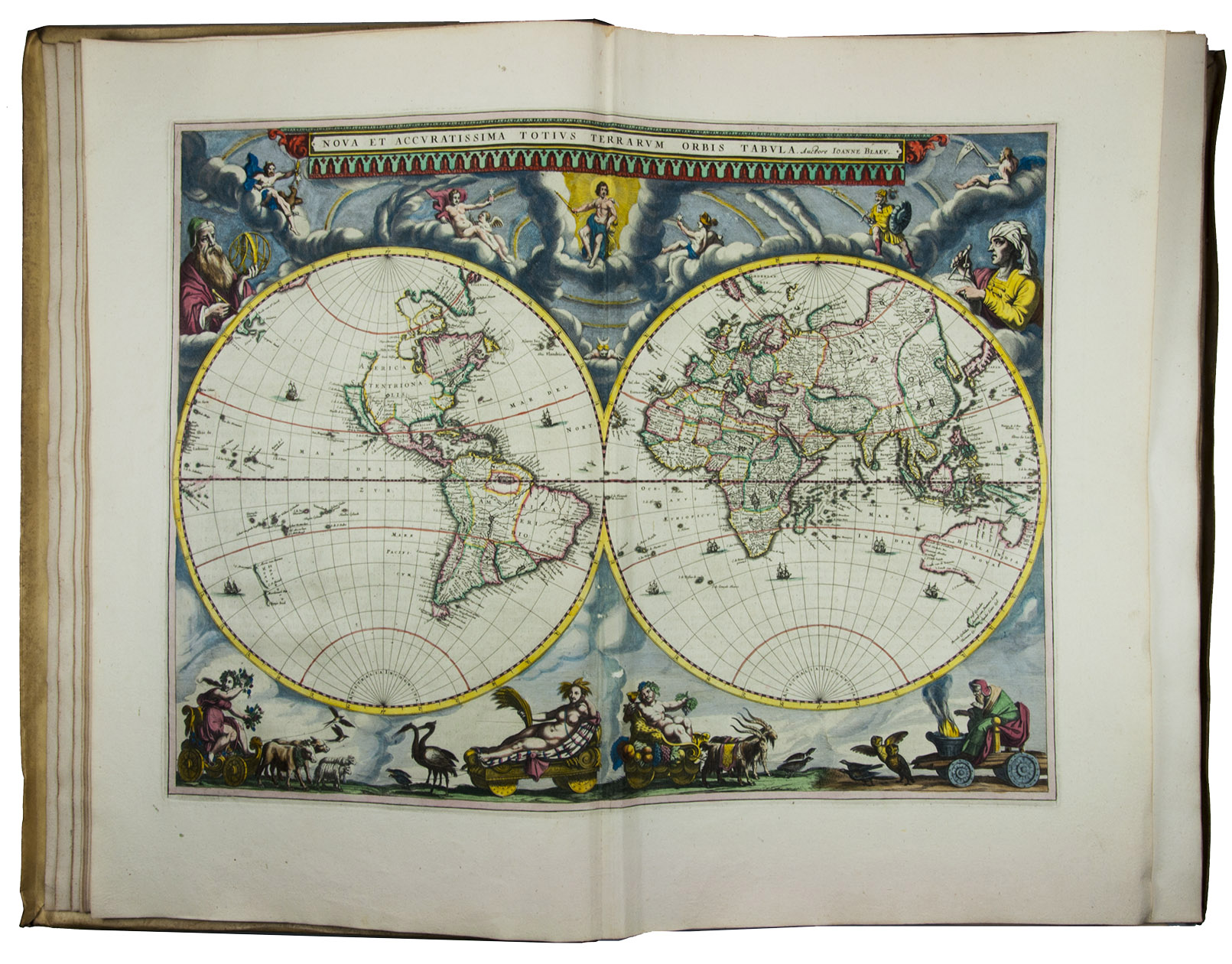
Amsterdam, Joan Blaeu, 1664-1665. 9 volumes. Imperial folio (55.5 x 36.5 cm). With 8 letterpress title-pages (1 general title, 4 volume titles & 3 part-titles; 6 with Blaeu’s woodcut armillary sphere device with Chronos & Heracles), 1 half-title, 9 engraved title-pages with letterpress slips (6 volume titles & 3 part-titles; 1 slip lacking), an engraved frontispiece and 610 engraved maps, views, plans, etc., mostly double-page (53.5 x 64 cm, plate size ca. 42 x 53 cm), 7 larger folding (the map of Europe in 2 whole & 2 half sheets, 65 x 101 cm as assembled; the others 1¼ to 1½ sheets), a few single-page and a few smaller, many including additional inset maps, plans and views, and decorated with coats of arms, human & mythological figures, animals, produce, etc. Further with an engraved compass rose, nearly 100 woodcut illustrations (mostly coins and medals), 5 woodcut tailpieces plus numerous repeats and 58 woodcut decorated initials (6 series, the 2 largest showing almost the whole alphabet) plus hundreds of repeats. Set in roman and italic types with incidental textura, fraktur, Greek, Anglo-Saxon (including a complete alphabet), Arabic and even woodcut(?) Chinese. With the engraved title-pages, frontispiece, other engravings (except for the compass rose and 2 inscriptions), woodcut devices on 4 title-pages and 1 woodcut initial coloured by a contemporary hand (the maps mostly in outline but with their decorations fully coloured) and some (mostly the engraved title-pages) with extensive use of gold. Contemporary gold-tooled vellum with 1.5 cm flaps turned over the fore-edge, sewn on 6 vellum tapes laced through the joints, with a hollow back, each board with a lozenge-shaped centrepiece with an oval central window, in a double frame (inner frame and connecting diagonals made with a 5 mm roll; outer frame with a 9 mm roll) with a large triangular cornerpiece inside each corner of the inner frame (2 stamps: a mirror image pair); the smooth spine divided into 7 fields by the same 9 mm roll, each field with a fleur-de-lis in each corner, the 2nd with the volume number in the form “TOM- I.” and each of the others with a 14 mm rozette; the centrepiece, cornerpieces and rolls all with floral decoration; each headband in brown and white around a vellum core laced through the joints.
First and only Dutch edition of Joan Blaeu’s great terrestrial atlas, often considered the greatest atlas of all time, with 610 engraved maps, views, etc., mostly double-page and all (except 3 small engravings showing a compass rose and 2 inscriptions) coloured by a contemporary hand. Many maps include inset plans and views (one includes 20 city and town plans and 1 view) and coats of arms (one includes about 40). Blaeu first published his great atlas in Latin as Atlas maior in 1662, but the Dutch edition includes a few maps more than the Latin or French editions. The atlases produced by the Blaeus, especially Willem Jansz (1571-1638) and his son Joan (1598/99-1673) are justly famous for the accuracy, originality and beauty of their maps and for the technical quality of their engraving and printing. The Blaeus had close ties with the VOC (Dutch East India Company) and Joan was appointed examiner of their navigators in 1658, giving him access to all the latest surveys and other topographic information the VOC brought back from their voyages throughout the world.
Offered by ASHER Rare Books & Antiquariaat FORUM, booth A17.
Pablo Picasso “Sueño y mentira de Franco”

“Sueño y mentira de Franco” (The Dream and Lie of Franco) is a series of two sheets of prints, comprising 18 individual images (post-card size), and an accompanying prosepoem, by Pablo Picasso, produced in 1937. Each sheet contains nine images arranged in a 3x3 grid. The first 14, in etching and aquatint are dated 8 January 1937. The remaining four images were added to the second plate later, without use of aquatint, and dated June 7, 1937. (related to studies for Guernica) set of 18 etchings mounted on two plates (Chine collé), each plate signed and numbered (150 copies) by Picasso.
Offered by Art on paper -- XX Century Art Books, booth E24.
CLEMENCEAU (Georges). [Foreword to: Contre la Justice.] No place, no date [Paris, 1899].
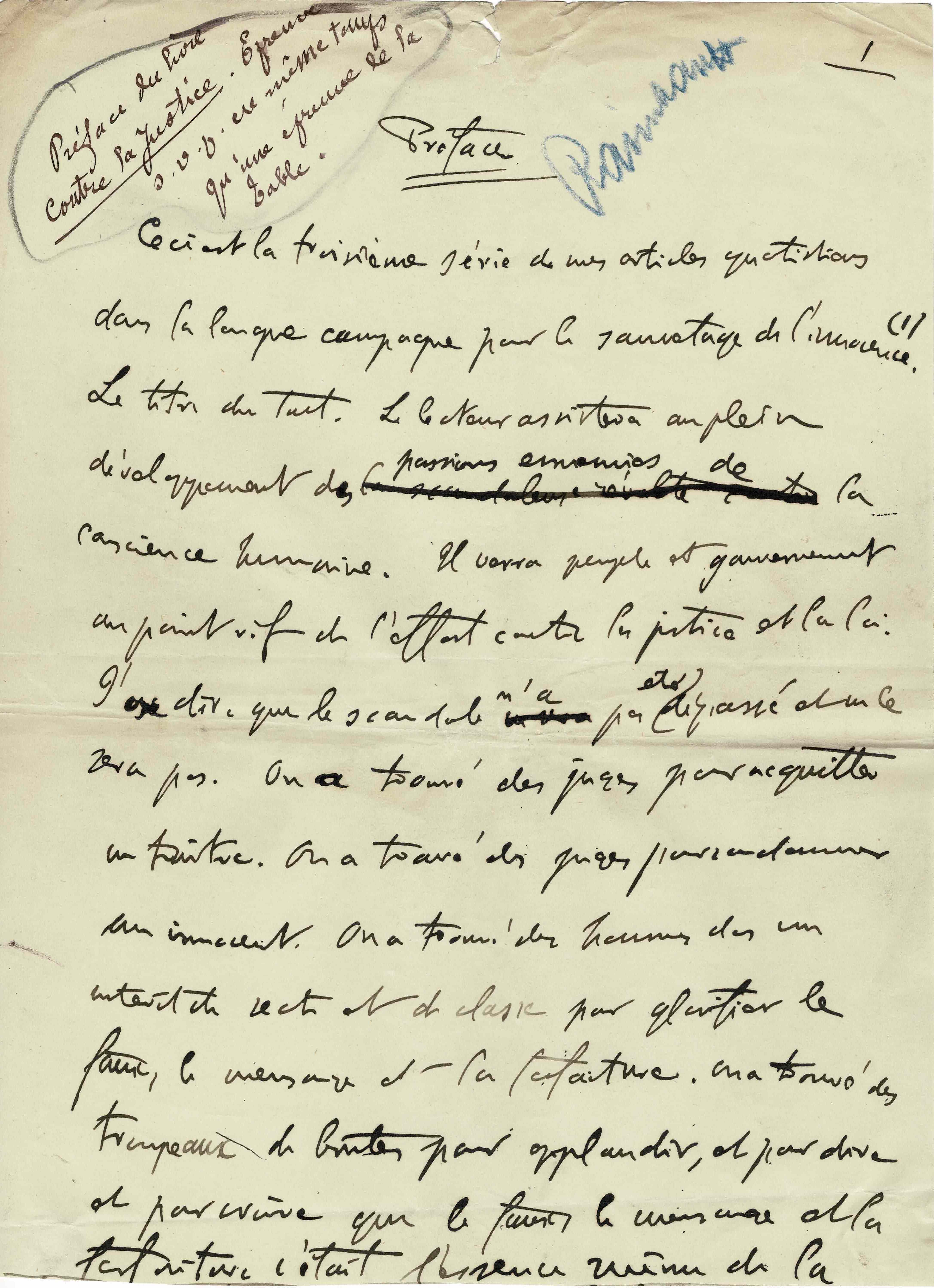
Autograph manuscript, 4to, 11 pages.
$ 16,500.00
An important manuscript in Georges Clemenceau’s hand: the first draft of his foreword to Contre la Justice (Stock, 1900) gathering his articles in favor of Captain Dreyfus published in L’Aurore 12 December, 1898 – 31 March, 1899.
A medical doctor and journalist as well as a politician and a future statesman, Georges Clemenceau (1841-1929) was among the leading figures supporting Alfred Dreyfus during “l’Affaire”. (The title J’Accuse for the key article by Emile Zola was his creation.) From 1899-1903, Pierre-Victor Stock published seven volumes gathering all his articles in support of the innocent officer: Contre la Justice was the third one.
His passionate and eloquent argument for the innocence of Dreyfus makes his foreword to Contre la Justice an inspirational piece of political literature.
Offered by Autographes des Siècles, booth B22.
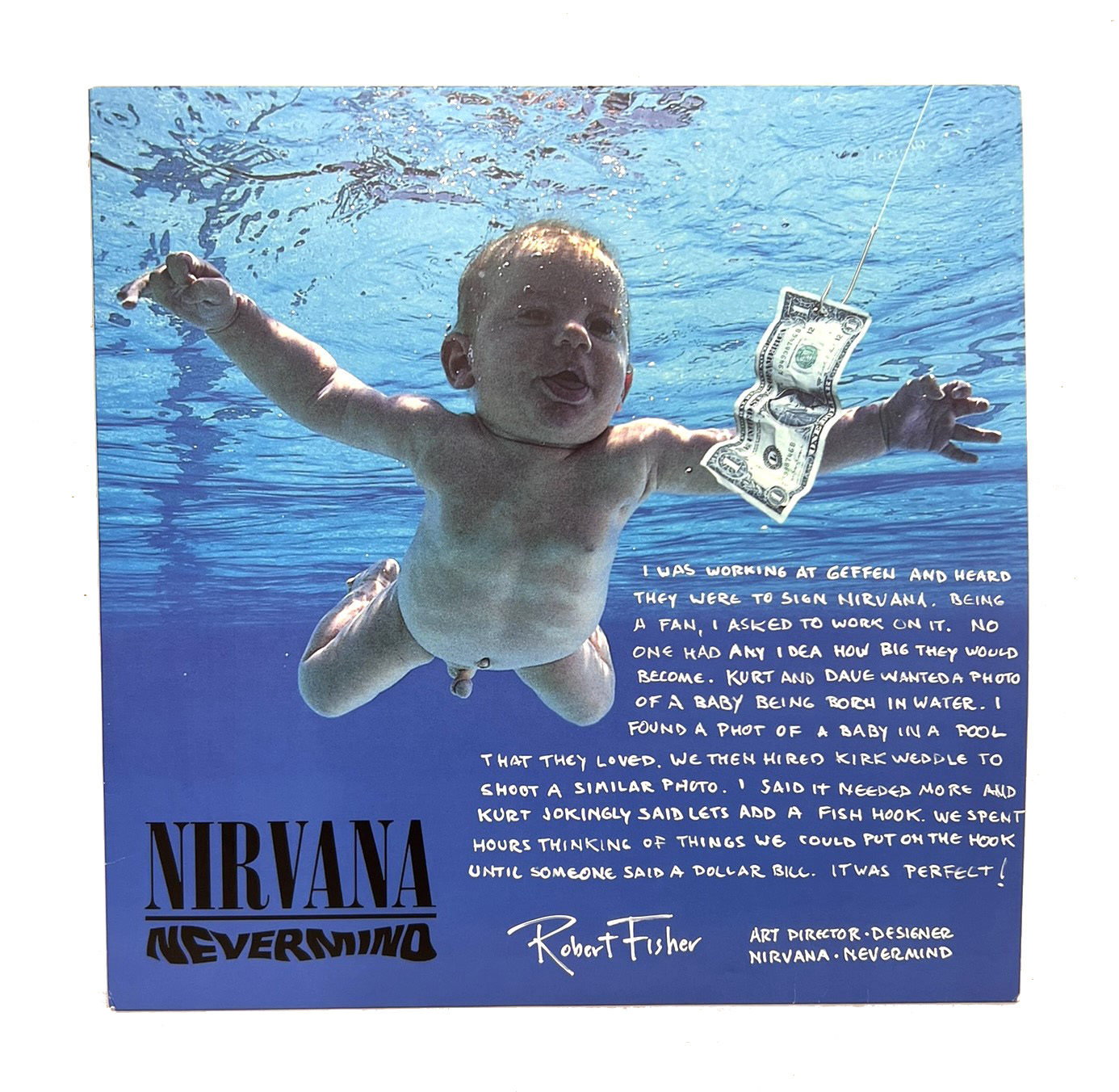
Collection of Nirvana original concert mini-posters and flyers covering nearly the entire lifespan of the legendary grunge band, from a small show on Dec. 1, 1988, six months before the group’s first studio album “Bleach” was released, to a stadium gig on December 9, 1993, while the band was on its North American “InUtero” tour. Just four months after their Dec. 9 show, Cobain passed away and Nirvana disbanded.
Some highlights include the earliest mini-poster (Dec. 1, 1988), which features the band as the third band, in the smallest-sized lettering, on a three act bill, a mini-poster for the band’s January 6, 1990 show at Hub Ballroom at the University of Washington, which led to Charles Peterson’s famous stage diving photo (and, according to rumors, a ban on Nirvana ever playing again at a University of Washington venue), and a flyer and mini-poster for two shows during Nirvana’s “Nevermind” tour (Sept. 27, 1991 at City Gardens, and October 14, 1991 at City Gardens). This collection of mini-posters and flyers is characterized by wonderful artistic variety, many with a DIY, “grunge” feel to them. They also provide a unique glimpse into the various grunge, punk, and alternative rock bands that Nirvana performed alongside throughout their career.
The collection is rounded out with an original “Nevermind” record album inscribed by the band’s art director, Robert Fisher, who oversaw the art and design for all of Nirvana’s Geffen releases, including “Nevermind,” “Incesticide,” “In Utero,” and “MTV Unplugged in New York.” In his inscription, he tells the origin of the iconic “Nevermind” album cover in his own words.
Offered by B&B Rare Books, booth C3.
"Speaking Likenesses" by Christina Rossetti
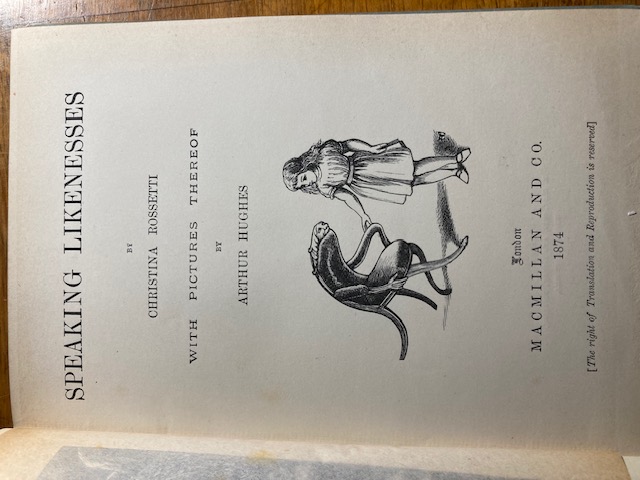
Quite apart from the fact that it is written in prose rather than Christina's customary poetry, the otherworld characters who the young girls meet clearly relate to the grotesque and bizarre world of Lewis Carroll's Alice. It is wittily illustrated by the esteemed pre-Raphaelite artist Arthur Hughes.
It was printed in 1874, and truly remarkably in terms of early graphic design, it still retains its original dust jacket, now one hundred and fifty years old.
Offered by BAS BOOKS, booth C23.
(COFFEE.) Marsigli [a.k.a. Marsili], Luigi Ferdinando. Bevanda asiatica.

Vienna: Van Ghelen, 1685.12mo. Engraving on title page and one woodcut headpiece. 47, [1 - blank] pp.Contemporary mottled calf, expertly rebacked to match, edges stained mottled red, occasional faint foxing and light spotting. $15,000.00
The extremely rare FIRST EDITION of this 17th-century study of coffee by Luigi Ferdinando Marsigli (1658-1730). Written in both Italian and Ottoman Turkish, it discusses coffee’s cultivation, preparation, service, and health properties. It is also one of the earliest European studies of Ottoman culture (and was so noted by Voltaire).
The life of Marsigli is nothing short of remarkable. As a noble, Marsigli was privately educated and spent his youth in naturalist pursuits until 1683 when he was wounded in battle and taken prisoner by the Tartars. “While I was mechanically serving in [Ahmed Pasha’s] court, I had to practice for many days the art of coffee making in a smoky tent.... This duty trained me in the art of coffeemaking and in observing its various effects, and it was the activity that gave me back my life, since while serving coffee I had met those Bosnians who bought me just in time when I was about to die under the Ottoman saber as a punishment for my attempt to escape” (pp. 9-10).
Marsigli was freed in 1684 and then wrote this treatise based on his experiences in the Ottoman Empire.
Offered by Ben Kinmont, Bookseller, booth C4.
The Beatles (written by Paul McCartney) Lovely Rita, Meter Maid (1967).
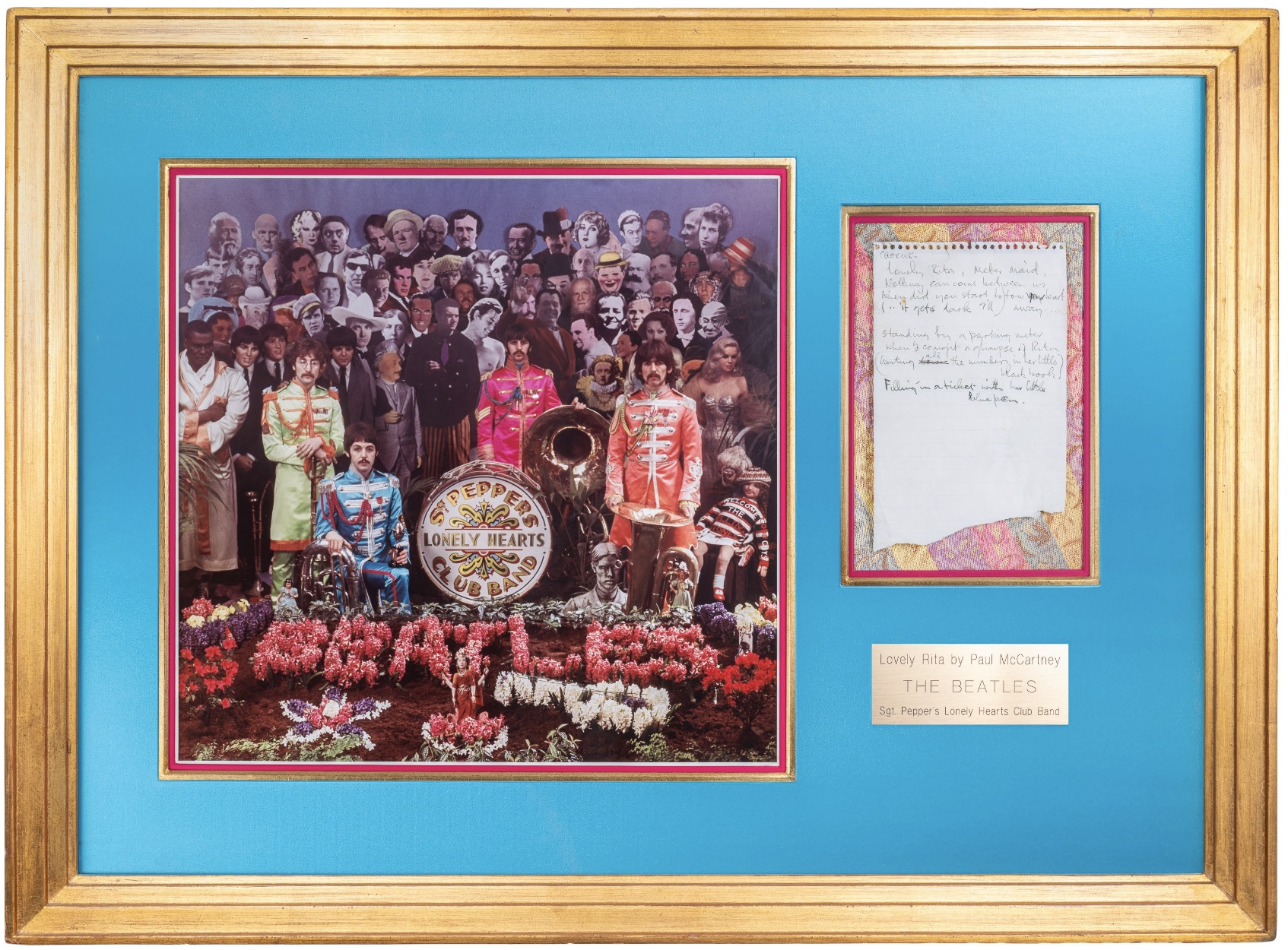
Paul McCartney’s handwritten, working manuscript (as Beatle) for “Lovely Rita,” from the album Sgt. Pepper’s Lonely Hearts Club Band. the most famous album in the entire panorama of modern music. This is the very first (rough) draft, 10 lines (in ink), all in Paul’s handwriting and all written on a single side of an irregular scrap of lined paper (7 1/2” X 5”) torn from a spiral notebook. 7 lines in black are Paul’s first concept. 3 lines of changes have been added later in blue, such as, “writing all the numbers in her little black book” changed to “filling in a ticket with her little blue pen” and still later recorded as “filling in a ticket in her little white book.” Near fine condition. Lavishly matted, and framed with a full size, uncorrected, 1st state proof photograph of the album cover, varying in that McCartney is kneeling, the band instruments have been passed around, and 2 people are among the onlookers who would not sign releases, and therefore did not appear on the published album. Ex–Butterfield’s, Dec. 12, 1993. Rare. Icon time.
Beatles manuscripts from Sargent Pepper held all the rock & roll world records until Bob Dylan’s Like a Rolling Stone sold at auction for $2,000,000 in 2014. But it’s been a while now and another Sgt. Pepper manuscript will take the record back eventually and someday soon the only way to see one will be in a museum, at the end of a long line, behind velvet ropes. The last authentic Sgt. Pepper manuscript at auction (A Day in the Life, admittedly a greater song), sold for $1,202,500 at Sotheby’s in 2010. The last real McCartney manuscript at auction (from another album) was an abridged, later, fair copy of 10 condensed lines from Hey Jude that he wrote out to be used as a key by a backup musician at a recording session ($910,000 at Julian’s in 2020) and that one, in contrast to ours, was not a working manuscript carrying his thoughts, inner debates, and changes.
Offered by Biblioctopus, booth C8.
Items from the Tom Verlaine Estate
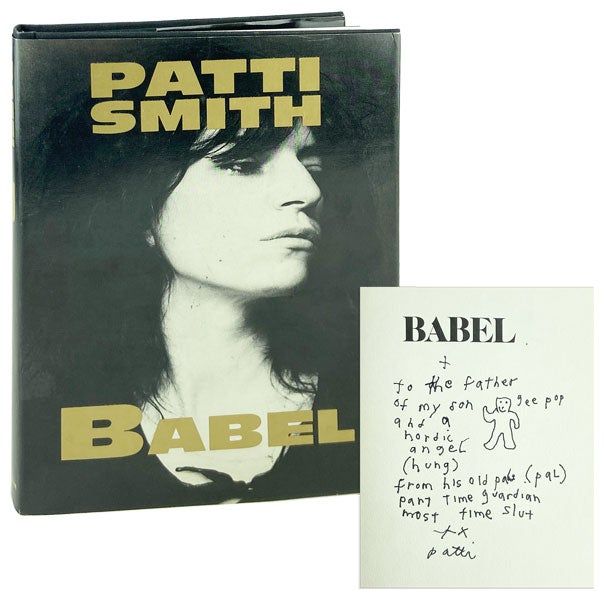
We'll be featuring a collection of association copies from the Tom Verlaine estate, which we've been handling for the past year. We have already received considerable press for this collection, most recently from the London Review of Books blog. As well as being the frontman for the band Television, Verlaine was the short-term boyfriend and life-long friend of Patti Smith and highlights we will be bringing include several association copies of her works warmly inscribed to him, including Babel and the "T" and "V" lettered copies of her limited edition poetry chapbook, Witt.
Offered by Capitol Hill Books, booth C24.
Mapping the Holy Land –The Naftalin Collection
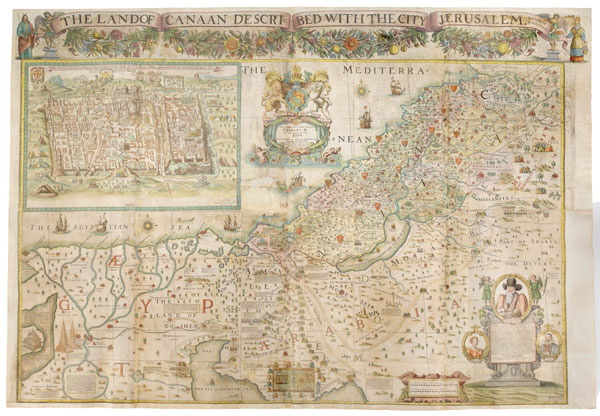
Over one thousand engraved, lithograph, and heliogravure maps from 1478 to 1948, preserved within 16 solander boxes and over 200 volumes.
There exists a deep-rooted affinity between the history of cartography and the history of the Holy Land. The region served as the subject of the very first survey recorded in writing (Joshua 18:4) and continued to playa prominent role in cartography throughout the following millennia. Only two maps featuring the Holy Land survive from antiquity, namely Ptolemy’s Quarta Asiae Tabula and the incredible Romanitinerarium known as the Tabula Peutingeriana. During the Middle Ages, maps of the Holy Land proved an exception to the generally poor quality of cartography, with the manuscripts of Pietro Vesconte and mappae mundi featuring Jerusalem at their centre attesting to the unparalleled interest in the region. Indeed, these early maps were almost always oriented to the east, oriens being the Latin word for the east, in order to face the direction of Jerusalem. This fundamental perspective demonstrates the integral role played by the Holy Land, and all it stood for, in not only the cartography, but also in the lives of Medieval peoples.
In the middle of the fifteenth century, a number of developments coincided to generate a surge in Holy Land maps. As movement became easier, an unprecedented number of travellers journeyed across the Mediterranean on pilgrimages, recording both verbally and visually the sites and structures they visited. At the same time, the invention and adoption of the printing press allowed such information to be disseminated on a scale never before seen. Alongside the books on travel, history, and theology printed in the subsequent centuries, one work did more than any other to transmit cartographic knowledge about the Holy Land across Europe. That work was, of course, the Bible. As Scripture was gradually translated into a vast array of languages and vernaculars, and new editions were produced for certain audiences, the demand and appetite for visual representations of the Holy Land increased correspondingly. Almost every Bible printed between the fifteenth and nineteenth centuries contained at least one map. These allowed the reader a glimpse of a place they would probably never see first-hand, extending from the shores of the Mediterranean across to the deserts of Arabia, the branches of the Nile Delta up to the mountains of Syria, depicting all that lay between as if through the eyes of heaven.
Daniel Crouch Rare Books is delighted to present Mapping the Holy Land - the Naftalin Collection, compiled over a lifetime and containing a wealth of maps and views of this important region. The over 1,000 items in this collection have many stories to tell. Through them we can trace the history of European cartography by observing the development of a single map in various states, translations, and adaptations. We can also see in them a comprehensive history of the world, from the Biblical Creation to the modern day.
Offered by Daniel Crouch Rare Books, booth A6.
Rowling, J.K. Harry Potter and the Philosopher's Stone.

[London]: Bloomsbury (1997). First edition. 8vo. [7], 8-223, [1] pp. Perfect-bound in pictorial boards: red, blue, yellow, white, and black decorations and blocking with yellow, white, black, and green lettering. The front board's illustration done by Thomas Taylor. Price of £10.99 on the rear board. With the full numberline (10 to 1) on the copyright page and the statement "First Published in Great Britain in 1997" on the copyright page. Errington A1(a). With all the points and textual errors called for by Errington present.
One of 200 copies that went to bookstores out of the 500 copy print run. No restoration, and no library markings of any kind. A pleasing copy of the first book in Rowling's beloved fantasy series. The artwork captures the whimsy and joy of the wizarding world. The book's first print run sold out quickly, a testament to its immediate and enduring popularity. Harry Potter and the Philosopher's Stone remains a cultural touchstone in children's and fantasy literature. Very Good.$115,000
Offered by Evening Star Books, booth E6.
Gutekunst 1876 Centennial Philadelphia US Centennial exhibition 1876
By Frederick Gutekunst

90.000 USD
Albumen print in one print, one sheet of papier, great condition, original frame. Size 10 feet by 18 inches. One of the studio’s most celebrated images is an impressive technical feat: a ten-foot long panoramic view of the Centennial Exhibition in Philadelphia, which at its unveiling in 1876 was described as the largest photograph in the world. (One of several rare surviving original imprints of this subject is on view in this gallery.) Perhaps the most famous Philadelphia photographer was Germantown native Frederick Gutekunst, whose studio was at Seventh and Arch for more than 50 years until his death in 1917.
Known as "the dean of American photographers," he took photos of some of the most famous celebrities of his day, including three presidents, numerous actors, cardinals, bishops and soldiers, and writers like Longfellow and Walt Whitman. His photo ofUlysses S. Grant was so popular it was pirated by a lithographic company in the 1860s. Gutekunst sued the company--and won. In 1876 he created a panoramic photo of the Philadelphia Centennial Grounds in Fairmount Park that was 10 feet by 18 inches--then the world's largest print.
Offered by Photo Discovery, booth D33.
Charles Dickens. Complete Works.
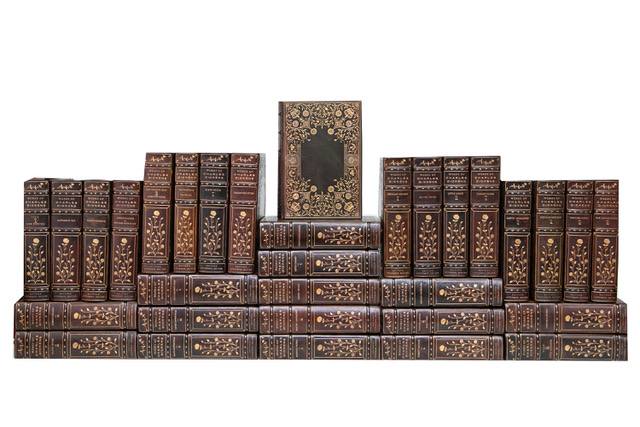
32 Volumes. Bound in full green Morocco, one of 25 copies. Illustrated with color plates by Kid.
Offered by Imperial Fine Books, booth D12.
ABOLITION. MARCHING BANNER. August 1st 1834, Slavery in the British Dominions Utterly and For Ever ABOLISHED. Act 3 & 4 William IV Chap. XXIII & XII.
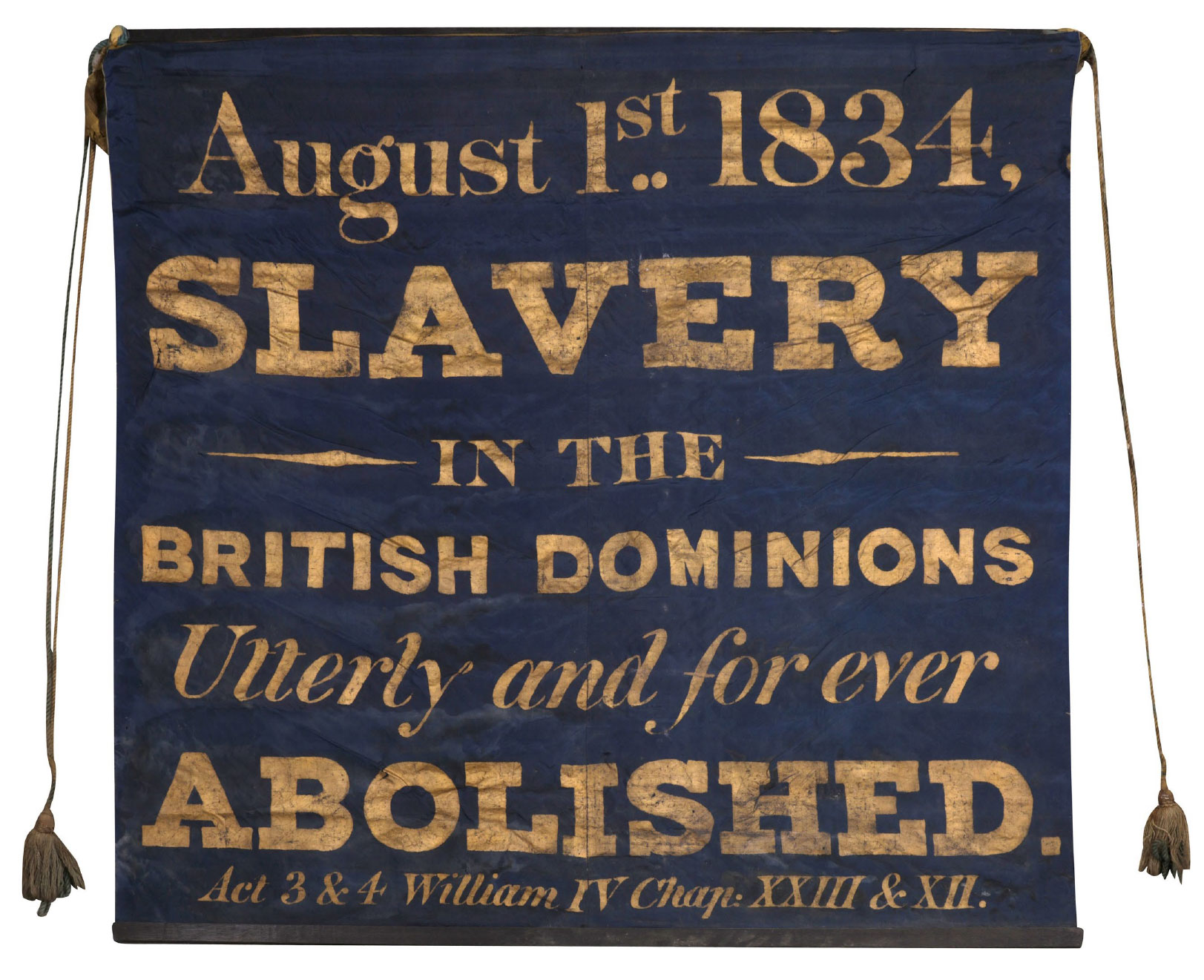
Banner, 97 x 89cm, of dark blue cotton, lettered in gold, complete with original wooden dowel hanger and silk tassels; sl. dulled with only sl. wear, one tassel (of 4) loose. Overall, an incredible survival in such condition.
A remarkable, deeply evocative and exceptionally rare marching banner commemorating the abolition of slavery in the British Dominions. Passed unopposed in the House of Commons on July 22nd, 1833 (one week before the death of William Wilberforce), the Emancipation Act came into effect on August 1st, 1834. Under its terms, 800,000 enslaved Africans in the British Caribbean were immediately emancipated, although the legislation also provided for a period of apprenticeship, which in the case of field workers bound them to their former owners for anything up to six years.
The definitive origin of this banner is unknown. Was it created in 1834 to be used at a civic commemoration of the Act? Was it marched by British radicals in support of abolition both in Britain and the USA? Or was it in fact, made and marched in America, celebrating the freedom of the enslaved men, women and children of the British colonies whilst campaigning for the future emancipation of the American enslaved? John Oldfield, Emeritus Professor of Slavery and Emancipation at the Wilberforce Institute, argues, in the following paragraphs, in support of it being a banner created in the United States and used in the campaign for abolition in America.
Although this item commemorates a specific British event, there is little evidence to suggest that banners of this description, which were clearly meant to be carried and displayed, were part of Britain’s vibrant abolitionist culture. In general, British activists did not commemorate 1834 and there was no tradition in Britain of anti-slavery marches. Some Chartists took inspiration from 1834 and there are documented links between Emancipation and the Anti-Corn Law League, but equally many Chartists opposed the terms of the 1833 Act, largely because it offered slaveowners £20 million in compensation. It seems unlikely, therefore, that this banner forms part of wider political or trades-union movements in Britain, either in terms of its style or its content.
Such banners were common in the United States, however. During the 1830s, ‘40s and ‘50s, American abolitionists regularly commemorated 1 August 1834. Organized for the most part by the Garrisonian wing of the movement, these events were popular throughout New England and usually involved parades and anti-slavery picnics. Many of the participants in these parades carried banners that explicitly referred to British Emancipation. Among the twenty or more banners on display at Hingham, Massachusetts, in 1844, for instance, was one representing ‘a slave at sunrise on the 1st of Aug. 1834, with the chains falling from his limbs, together with the motto “This is the Lord’s doing. Slavery abolished in the West Indies, 1st August 1834”. Describing this procession, one abolitionist newspaper noted that ‘throughout its entire length, of nearly a mile and a half, splendid banners were displayed at short intervals, which, with the varied dresses and imposing numbers of its countless ranks, attracted universal attention and admiration’.
Similarly, in New Bedford, Massachusetts, in 1844, a large procession of Black activists marched through the streets, led by ‘a cavalcade of 40 young men, with a banner inscribed, “In commemoration of British West India Emancipation – 800,000 chattels restored to men”’. If anything, these parades became larger and more sophisticated as time went on. Many well-known activists spoke at Emancipation Day celebrations, among them William Lloyd Garrison, Wendell Phillips and Frederick Douglass. African Americans also organized their own parades, complete with marching bands, banners and religious observances of one description or another. These events and the practices that accompanied them continued into the 1850s and would provide an important backdrop to the abolitionist struggle in the United States that reached a climax with the American Civil War (1861-65).
Surviving examples of anti-slavery banners can be found in the collections of the Massachusetts Historical Society (https://www. masshist.org/features/boston-abolitionists). They are remarkable artefacts and provide ample testimony to the way in which British Emancipation inspired American abolitionists and helped to shape their rituals.
With thanks to Emeritus Professor of Slavery and Emancipation at the Wilberforce Institute, University of Hull.
Offered by Jarndyce Antiquarian Booksellers, booth B5.
SCIENCE AND INVENTION. August 1923 (volume 11, number 4). Edited by Hugo Gernsback.
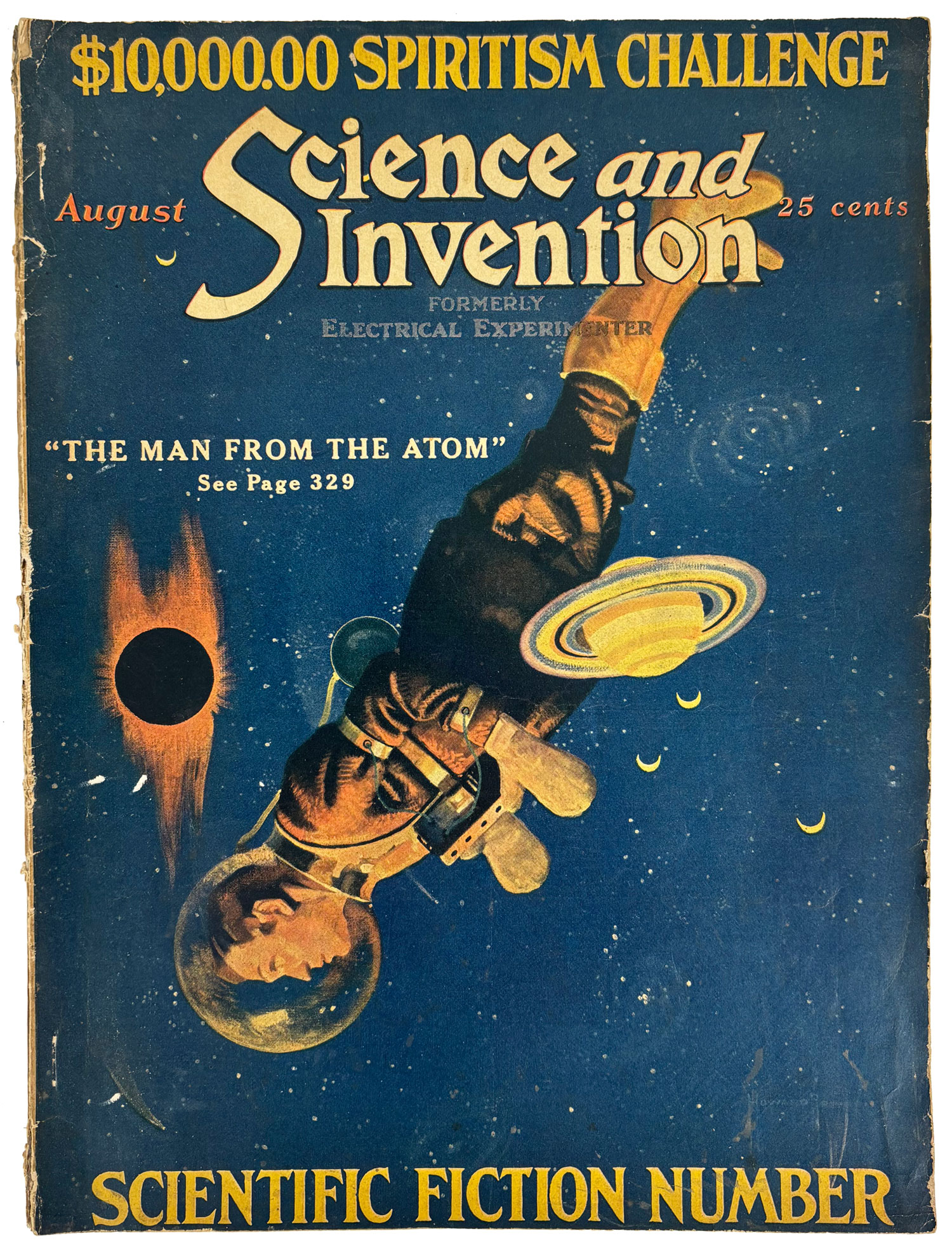
Jamaica, New York: Experimenter Publishing Company, Inc., 1923. Large octavo, single issue, cover by Howard V. Brown, interior illustrations by Frank R. Paul, pictorial wrappers.
Bedsheet-sized pulp. The famous "Scientific Fiction" number." Includes "The Man From the Atom" by G. Peyton Wertenbaker, a Dr. Hackensaw story by Clement Fezandie, the second part of "Around the Universe" by Ray Cummings, "Advanced Chemistry" by Jack G. Huekels, "The Electric Duel" by Hugo Gernsback, "Vanishing Movies" by Teddy J. Holman, and other nonfiction material. SCIENCE AND INVENTION started publishing science fiction on a regular basis, an outgrowth from Gernsback's earlier magazine MODERN ELECTRICS. After selling that magazine he launched in 1913 ELECTRICAL EXPERIMENTER which became SCIENCE AND INVENTION in 1920. With the name change there was a policy change in that the magazine would have at least two science fiction stories per issue. "...SCIENCE AND INVENTION has become justifiably famous in the history of science fiction because of its August 1923 issue, which was a special "Scientific Fiction" number, qualifying as possible the first English-language science fiction issue of a magazine." - Tymn and Ashley (eds), Science Fiction, Fantasy, and Weird Fiction Magazines, pp. 500-4. With the continued publishing of science fiction material including numerous serials it was certainly laying the groundwork for AMAZING STORIES.
Mild edge wear, several small rubs to front cover, light wear to spine with some small loss to spine ends and to mid spine with the loss of the "CE" in SCIENCE, moderate soiling to rear cover and a small chip to the left rear. An important issue historically and uncommon.
Offered by John W. Knott, Jr., booth B11.
Gardner, Erle Stanley. (Dietrich, Marlene). Lofgren, Charles (dustjacket art)
THE CASE OF THE DUBIOUS BRIDEGROOM
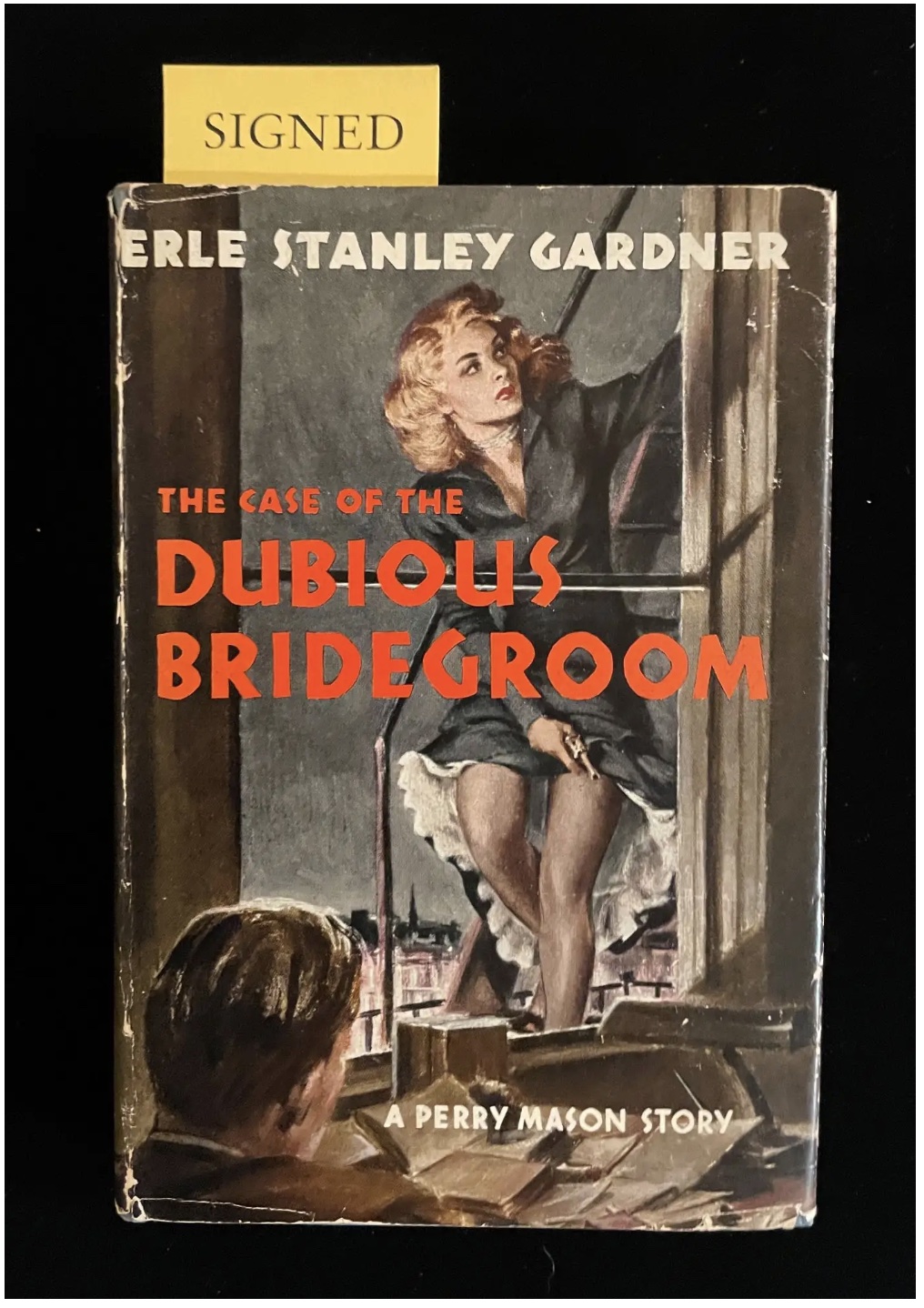
NY: William Morrow, 1948. 1st Edition. Hardcover. First edition, blue covers, titles stamped in red, with Dubious Bridegroom last title on Perry Mason titles listed in rear. Inscribed on the ffe by Gardner to the legendary Marlene Dietrich with his tribute to her volunteer efforts in WWII: "To Marlene Dietrich who has given so generously of her talent to help keep us a great nation. Yours Erle Stanley Gardner March 1949". Indeed, the German-born Dietrich (1901-1992), after becoming an international sensation with The Blue Angel and then emigrating to Hollywood where she made hugely successful films in the 1930s, dedicated notable efforts to humanitarian causes during World War II: entertaining on tour Allied troops, housing German and French exiles, providing financial support and advocating for American citizenship for those fleeing Europe. For boosting morale on the front lines during the war, she received honors from the United States, France, Belgium and Israel, and posthumously was made an honorary citizen of Berlin in 2002. Condition is quite nice: the book appears unread, the top edge is a tad dusty, else almost near fine. The unclipped dustjacket ($2.50) has moderately worn corners and edges, most noticeably at the spine head, the white background of the rear panel and flaps is toned. Very Good + / Very Good.
Price: $4,750.00
Offered by Johnnycake Books, booth B7.
President James Monroe’s personal copy of LES ANTIQUITES ROMAINES DE DENYSD’HALICARNASSE (Paris, 1723)
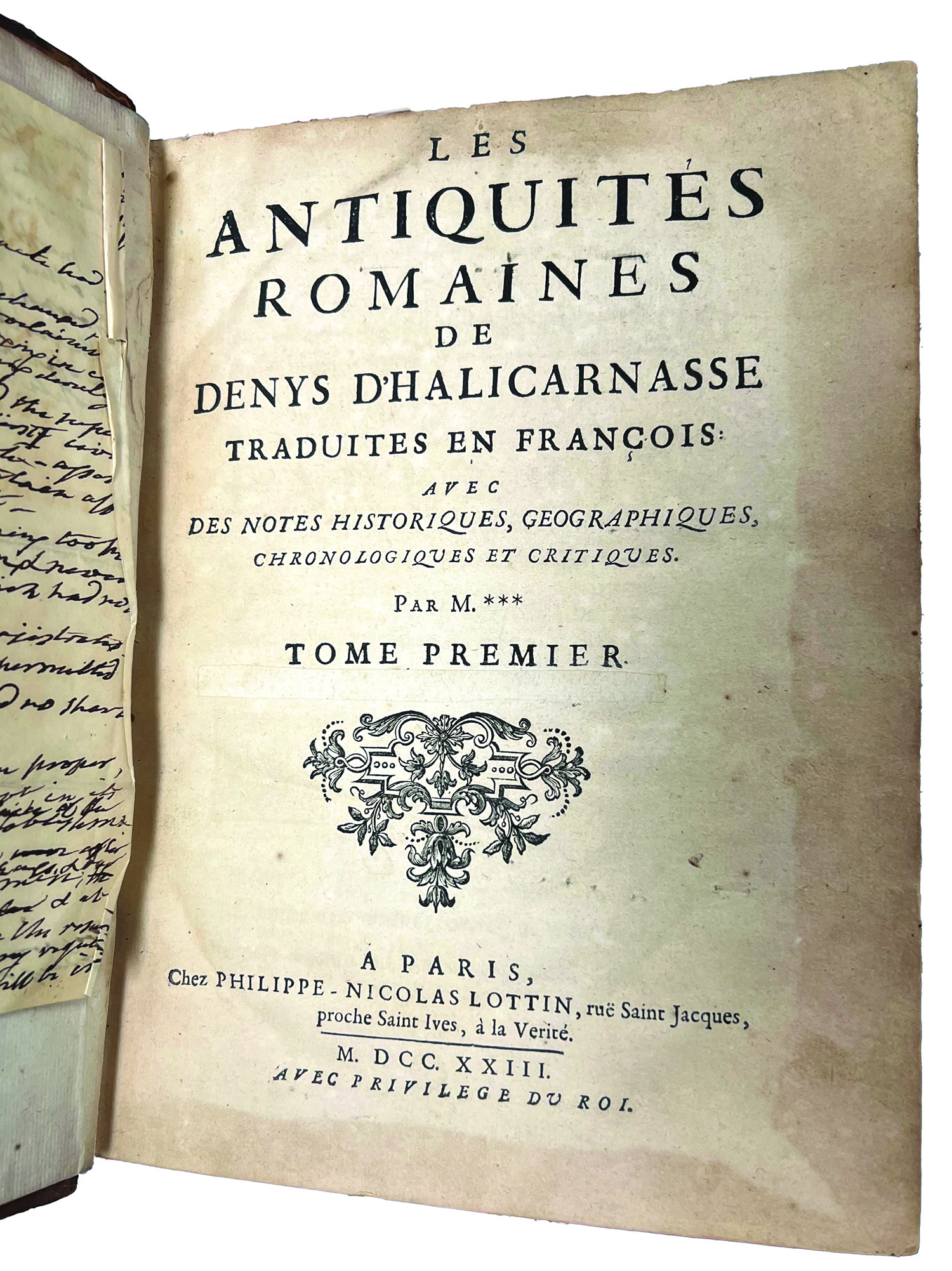
An important influence on the Founding Fathers which speaks to the classical ancestry of the United States Constitution. Monroe’s bookplate appears in both volumes, along with a handwritten sheet of notes on the Roman government in his hand. The last of the Founding Fathers to serve as President of the United States (1817-25), James Monroe (1758-1831) previously served as governor of Virginia, a member of the United States Senate, U.S.ambassador to France and Britain, the seventh secretary of state, and eighth secretary of war. His presidency coincided with the “Era of Good Feelings” (1815-25), a period characterized by a sense of national purpose and a desire for unity following the War of 1812, during which the influential Monroe Doctrine was issued, effectively limiting European colonialism in the Americas. Monroe and George Washington, with whom he served during the Revolutionary War, are the only presidential candidates to run unopposed for a second term. According to the catalogue of Monroe’s library reconstructed by Gordon W. Jones, French books comprised almost a third of the library, which, according to Monroe’s own estimate approached nearly 3,000 volumes. However, only a small number of the volumes from Monroe’s extensive library have survived, and of those remaining few bear his bookplate. $25,000
Offered by johnson rare books & archives, booth B33.
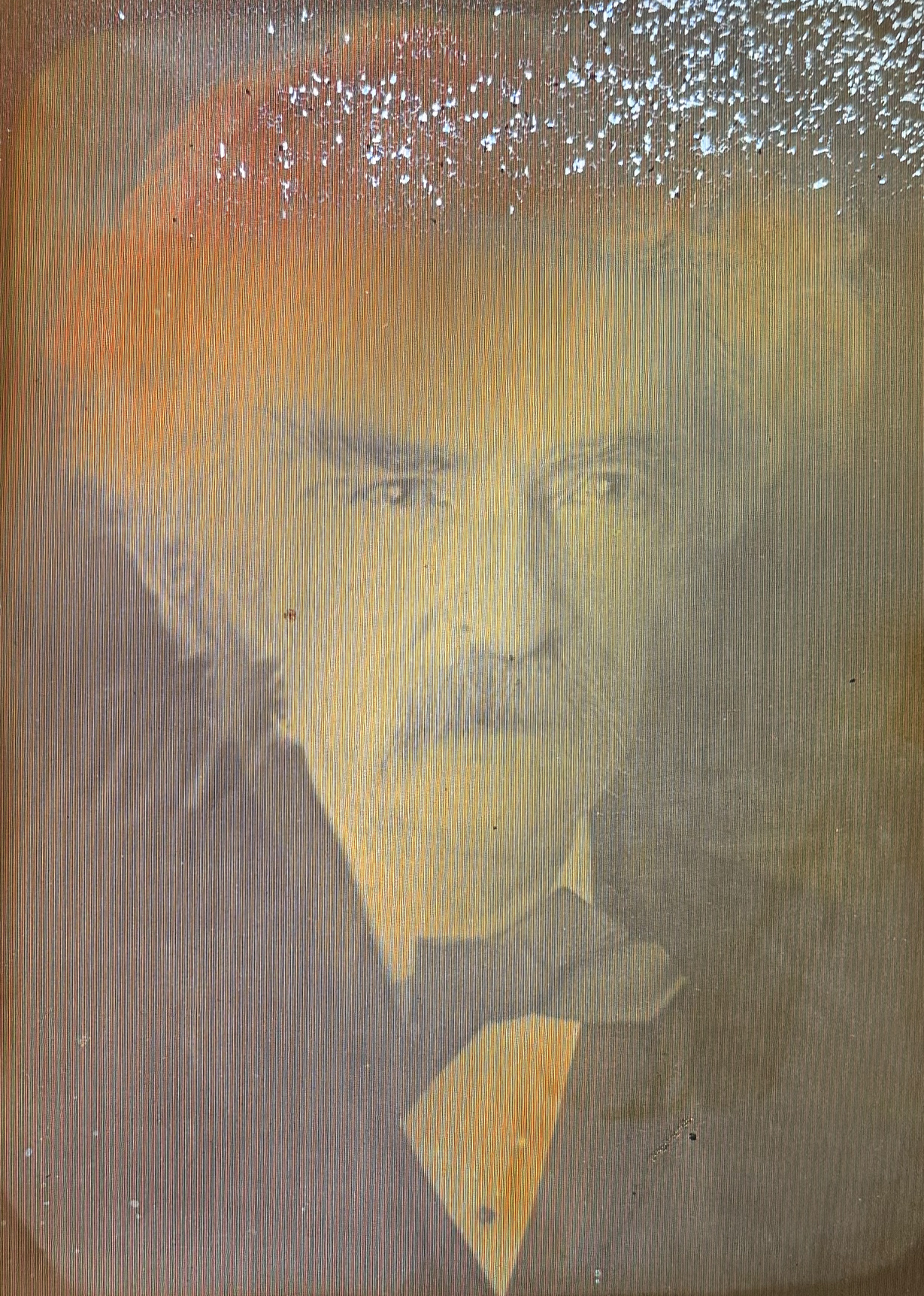
A rare and exceptional portrait of writer Mark Twain photographed in 1902 using Frederic Ives' patented lenticular photography invention, an early 3-dimensional process that was popular through the first half of the 20th century. In the original frame with a printed label with patent information. Some deterioration on the top with loss of emulsion. The portrait is largely unaffected and a photo conservator may be able to improve the appearance of emulsion loss. Frame: 10" x 8", Image: 8" x 6". Semi-transparent surface; most images were taken on a lightbox.
Offered by Keith De Lellis Gallery, booth C26.
FRAIPONT (Gustave) - Applications de la forme à l'espace à décorer
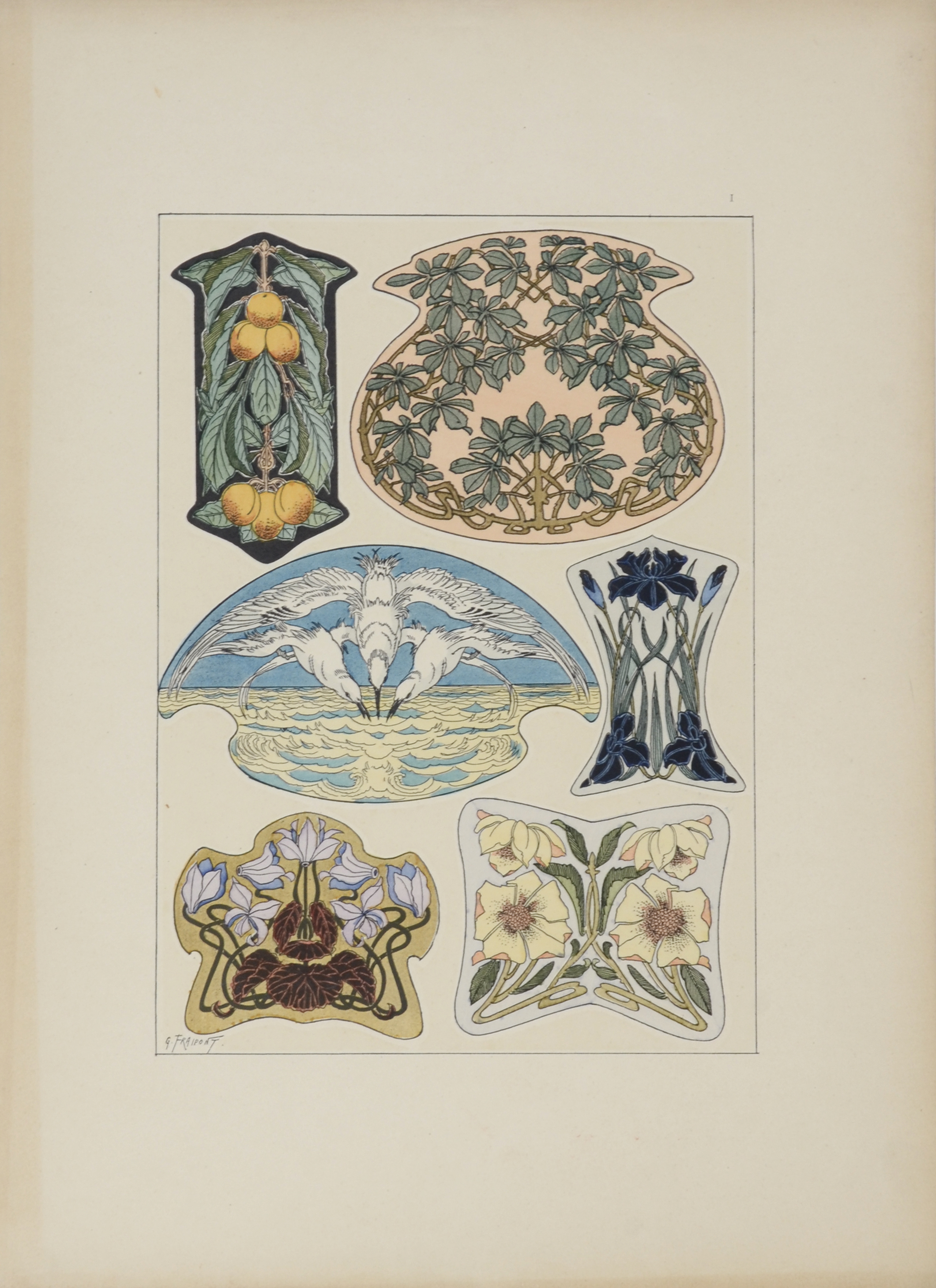
Paris, Librairie Renouard - Henri Laurens Editeur, s.d. [1905]
In-folio (35,7 x 28 cm), 27 loose original drawings (two of a slightly smaller format), preserved in a full printed canvas portfolio illustrated with Japanese parasols with title label on spine. Set of 27 splendid original plates, containing in aggregate 200 original ink drawings by Gustave Fraipont, consisting in a unique and lovely set of decorative compositions produced at the very beginning of the 20th century. Each of the 27 plates, on large cardboard sheets, is signed by the artist. Each plate is composed of 5 to 10 original drawings, totaling to 200 drawings, 85 of them highlighted with blue pencil.
The first 20 plates constitute the entire set of drawings used to publish the decorative art portfolio entitled Applications de la forme à l'espace à décorer. In its edited form, the printed plates have been reduced by approximately a quarter compared to the original drawings and hand colored. The other 7 unpublished plates were produced when conceiving the portfolio but not retained. They offer a variety of decorative shapes, classified by type (triangular shapes, crescents, irregular curves, stars, triangles, symmetrical forms, crosses, X shapes, spandrels, stars and rosettes, mid-spherical pediments, crescent pediments, pediments and spandrels, round, ovoid and derivatives, arched and polygonal shapes) to decorate bowls, plates, vases, pieces of furniture, etc.. They are illustrated with a variety of animal and floral motifs, of great beauty.
In excellent condition. Ink stains and handling marks on the back of original plates, notes in blue pencil for printing.
Offered by Librairie Faustroll, booth C13.
The Hobbit signed by J.R.R. Tolkien, published by Houghton Mifflin Company of Boston in 1973.
.jpg)
Octavo, [8], [9]-317pp, [3]. Publisher’s blue-green cloth, title stamped in blue on cover and spine. Stated “twenty-ninth printing” on copyright page, released in February of 1973. Solid text block, appears unread. Faint foxing to cloth covers and along top edge of text block, bump to top edge of rear board. Complete with 8 illustrations and 2 bi-fold maps by Tolkien, all in black and white.
In the publisher’s dust jacket, $4.95 on front flap, with advertisements for Lord of the Rings on rear flap. Faint foxing to verso, light toning to spine, free of restoration, a near fine example.
This work was part of the New Houghton Mifflin edition, revised and published in 1966. (Hammond & Anderson, A3j) The inclusion of an ISBN began with the “twenty-fifth” printing (February, 1968) and is found on the copyright page of this copy. (Devon Press, 2024) Housed in custom quarter brown morocco chemise.
Signed on the half title by J.R. R. Tolkien.
Provenance: This copy includes correspondence between Joy Hill and Arthur E. Rash of Rhode Island. Joy Hill was an administrative employee of George Allen & Unwin Ltd, serving as the secretary to Rayner Unwin and supervising correspondences with Professor Tolkien. These 5-letters outline the process of having Professor Tolkien sign this copy in the spring of 1973, a few months prior to his death in September of the same year. Additional correspondence confirms the prior owner purchased this book from Arthur E. Rash in the mid-1980’s.
$22,500.00
Offered by First Edition Rare Books, booth E26.
Dick, Philip K. LETTER ARCHIVE OF 24 LETTERS, NOTES (one from Tessa Dick), CARDS and POSTCARDS (with two additional letters in photocopy) BETWEEN PHILIP K. DICK AND LINDA LEVY CASTELLANI BETWEEN 1972-1975. [A DARK HAIRED GIRL].
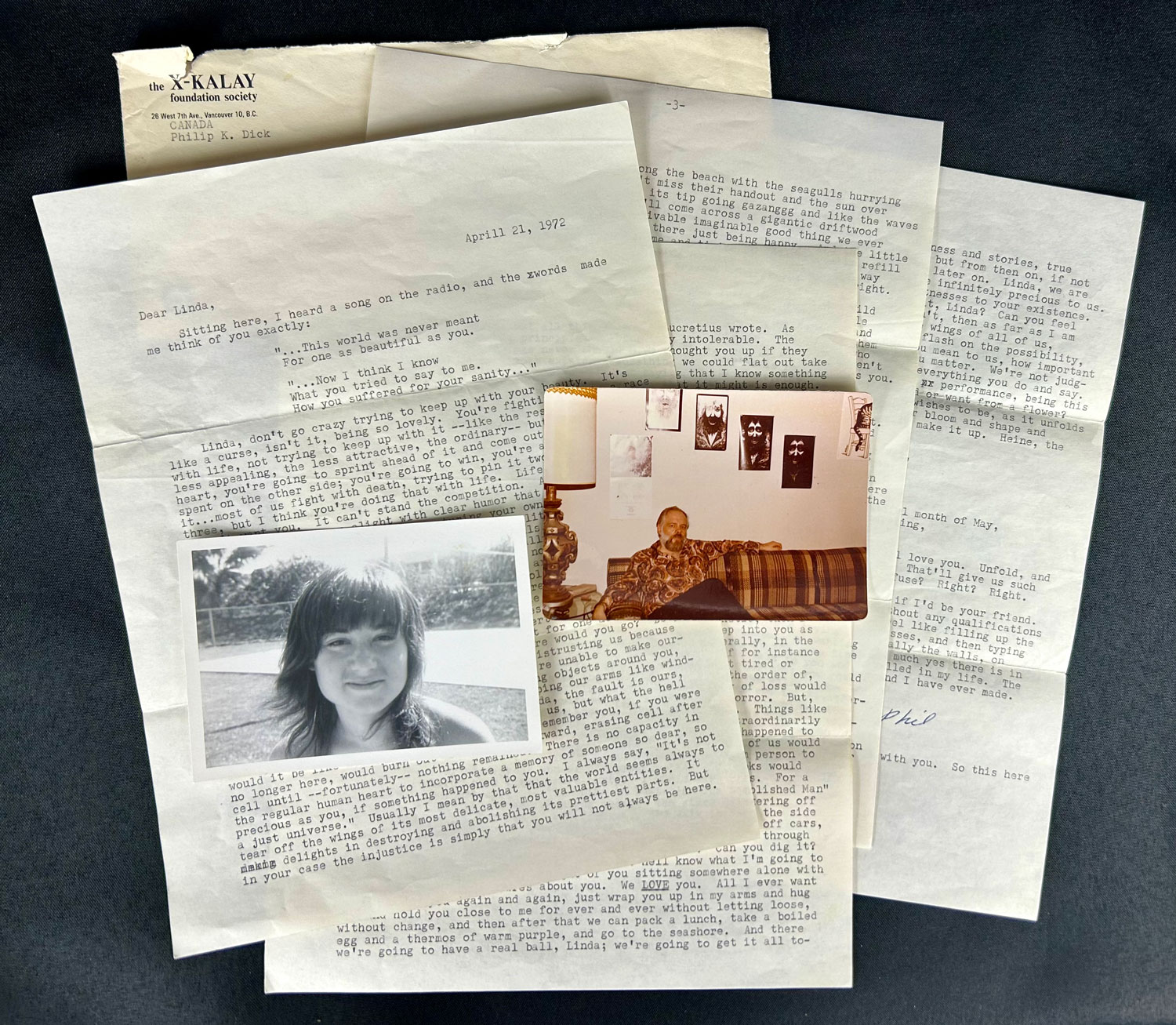
The correspondence consists of 17 typewritten letters (24 pages), 4 letters handwritten (5 pages, including one from Tessa Dick), 2 postcards, 1 greeting card and two more letters in photocopy (originals now lost). A collection of love letters to one of Philip K. Dick's "Dark Haired Girls." Linda Levy met Dick in 1972 and their three year correspondences detail their relations. At the end of his first letter he professes his love for her and proposes marriage. Included is an introduction and a brief note from Linda preceding each item.
Linda herself writes of these letters: "Of those few, even fewer knew another side of Phil, the man who wrestled with demons and often lost. Those few were usually women. Phil loved women, sometimes to obsession, and as much as he loved them, I think he simultaneously detested them. Otherwise, how do I explain the brooding darkness that consumed him and led him to outbursts of violence – physical and emotional - toward the women he professed to love? I don’t want to imply that there were only two sides to Phil, because, like everyone, he was multidimensional and multi-faceted. In this correspondence you will see the man who loves and longs, the man who is mean and vindictive, the man who is playful and funny, and the man who is hard to categorize."
In an excerpt of a PKD letter to Roger Zelazny (12/1/72) which editor Paul Williams used in his introduction to THE DARK HAIRED GIRL: "…. one goal that didn’t disappear from me: my search for the dark-haired girl, which I wrote about in letter after letter, often to the dark-haired girl herself [TDHG editor notes: Kathy in San Rafael, Jamis in Vancouver, and Linda in Fullerton]..." These letters provide another insight into Philip K. Dick. The material is in fine condition overall.
$150,000
Offered by John W. Knott, Jr., booth B11.
Kunsthandel Mitmannsgruber, booth A38
CABINET DES MODES u les modes nouvelle, décrites d'une manière claire et prècise, et représentées pardes planches en taille-douce, enluminées.
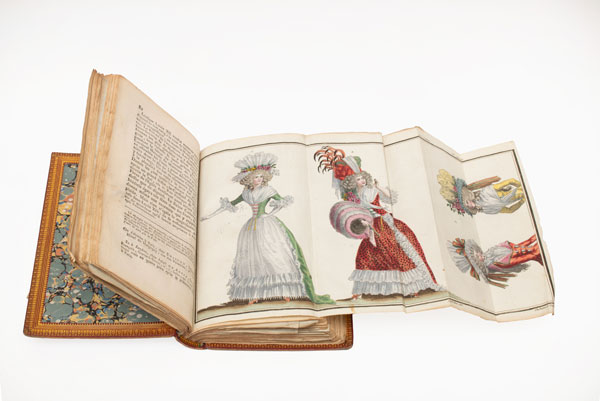
Paris, Buisson, 1785-1788. 3 vol. Large 8º (199 x 122 mm.) Bound by the art deco binder, Henry Noulhac (1866-1931) in red morocco, covers with triple gilt fillets, spines gilt in compartments. Red edges. 212 engraved plates, of which 199 are hand colored, including 40 folding. They were all engraved by Duhamel based on the drawings of Desrais, Defraine, Milton, William, Charpentier and Pugin. This bimonthly magazine, issued before the French revolution, was intended to promote French fashion throughout the world. The charming plates concentrate on dresses but also depict hats and carriages. The magazine was continued under the title Journal de la mode et du gout par M. Lebrun. First volume corresponds to 1er Cahier 15 Novembre 1785 to 1er Cahier Novembre 1786 (72 plates). Second volume corresponds to 1er Cahier 20 Novembre 1786 to 36e Cahier 10 Novembre 1787 (99 plates). Third volume corresponds to 1er Cahier 20 Novembre 1787 to 36e Cahier 10 Novembre 1788 (36 plates). Without the last volume, published in 1789. Slightly stained. Provenance: Carlo De Poortere (exlibris at front endpaper). Colas 500; Cohen 199; Lipperheide 4569; Rahir 351.
Offered by Liberia Bardon, booth A19.
Bradbury, Ray. Original painting.
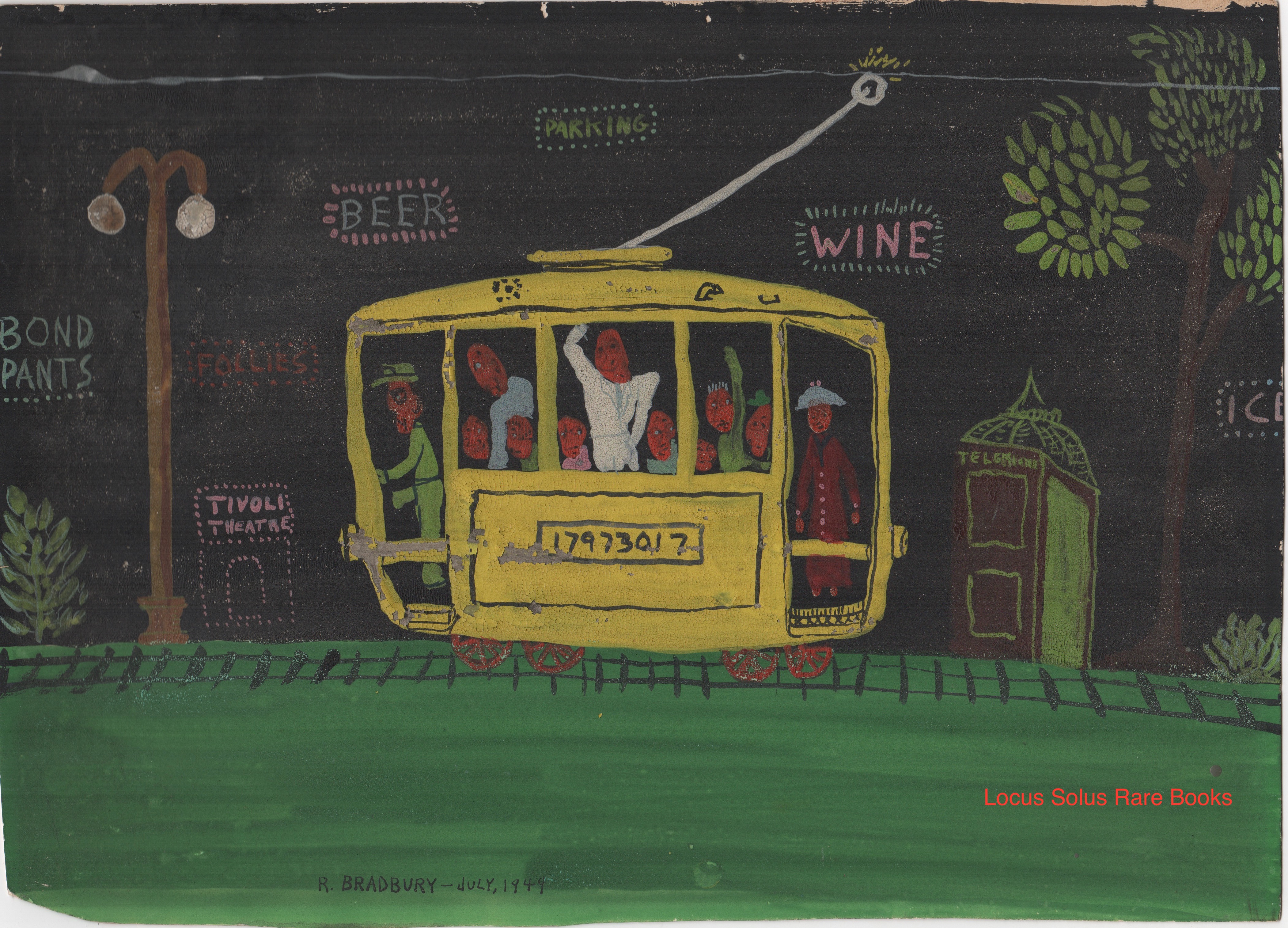
(Los Angeles): 1949. Tempera on cardstock paper, approx. 10 X 14 in. Wear to edges; some flaking of the surface.
Nighttime cityscape depicting images of Los Angeles, with the central image of a streetcar filled with passengers and all around lighted signs (Bond Pants, Follies, Tivoli Theatre, Beer, Parking, Wine, Ice) a lamppost, a telephone booth, and a leafy tree. Signed "R. Bradbury - July, 1949" at the bottom. In a 2009 interview with the LA Times, Bradbury recalled his early exposure to art and stated that "painting has been part of my life since I was a child . . . My artwork doesn't inspire my writing, it's my writing that inspires my artwork." The streetcar figures in some of Bradbury's stories, including "The Trolley" in the collection Dandelion Wine. Given the date, however, it is conceivable that this image may have been inspired by a 1947 story Bradbury published in the New Yorker, in which a Mexican immigrant is forced to leave his adopted home of Los Angeles: "On many nights he had walked the silent streets and seen the bright clothes in the windows and bought some of them, and he had seen the jewels and bought some of them for his few lady friends. And he had gone to picture shows five nights a week for a while. Then, also, he had ridden the streetcars—all night some nights—smelling the electricity, his dark eyes moving over the advertisements, feeling the wheels rumble under him, watching the little sleeping houses and big hotels slip by." (Provenance: the estate of LA musician, composer, and longtime UCLA faculty member Theodore Norman, who was given the painting by Bradbury.) $15,000.00
Offered by Locus Solus Rare Books, booth B7.
Breakfast at Tiffany’s - Truman Capote. New York: Random House. 1958.
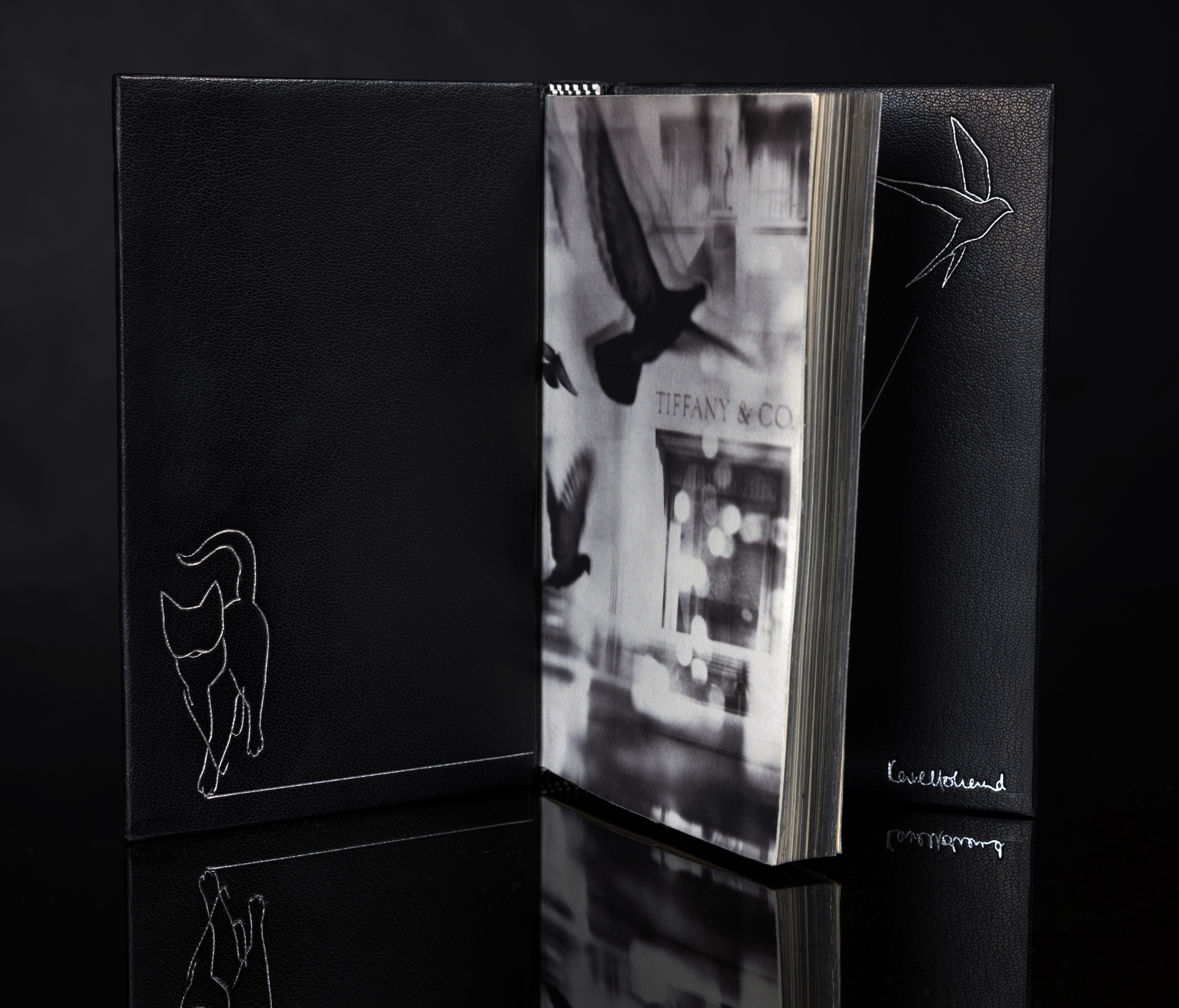
A unique rebinding of a signed first edition of this much-loved classic.
A signed, first edition bound by Kate Holland in full black goatskin with a design from a New York street map of the time. The main streets are platinum pavé setting by Bentley and Skinner with over 1000 white diamonds, totalling nearly 30 carats, the side streets are blind tooled and the location of the Tiffany’s flagship store at the intersection of Fifth Avenue and 57th Street is marked by a single 1ct emerald-cut blue sapphire. The title is hand tooled down the spine in platinum. Doublures of full black goatskin with platinum tooling. Endpapers are photographic prints from David Attie’s original series of photomontages. All edges graphite. Hand sewn silk endbands. Custom made solander box. The book rests on a cast glass plinth by artist glassmaker, Jade Pinnell and is housed in an ebonised birdcage by Dom Parish. All contained in a custom-made vintage trunk also by Dom Parish. The recurring motif of the vintage birdcage in the book symbolises Holly Golightly’s fear of captivity and her relentless pursuit of female emancipation and sexual freedom. Art direction and production by Kate Holland
Offered by Lux Mentis, Booksellers, booth A10.
“Shall we brother Englishmen, refuse good sense and saving knowledge, because it comes from the other side of the water.”
FRANKLIN (Benjamin). The Way to Wealth, As Clearly Shewn in the Preface of an Old Pensylvanian Almanack, entitled, Poor Richard Improved.
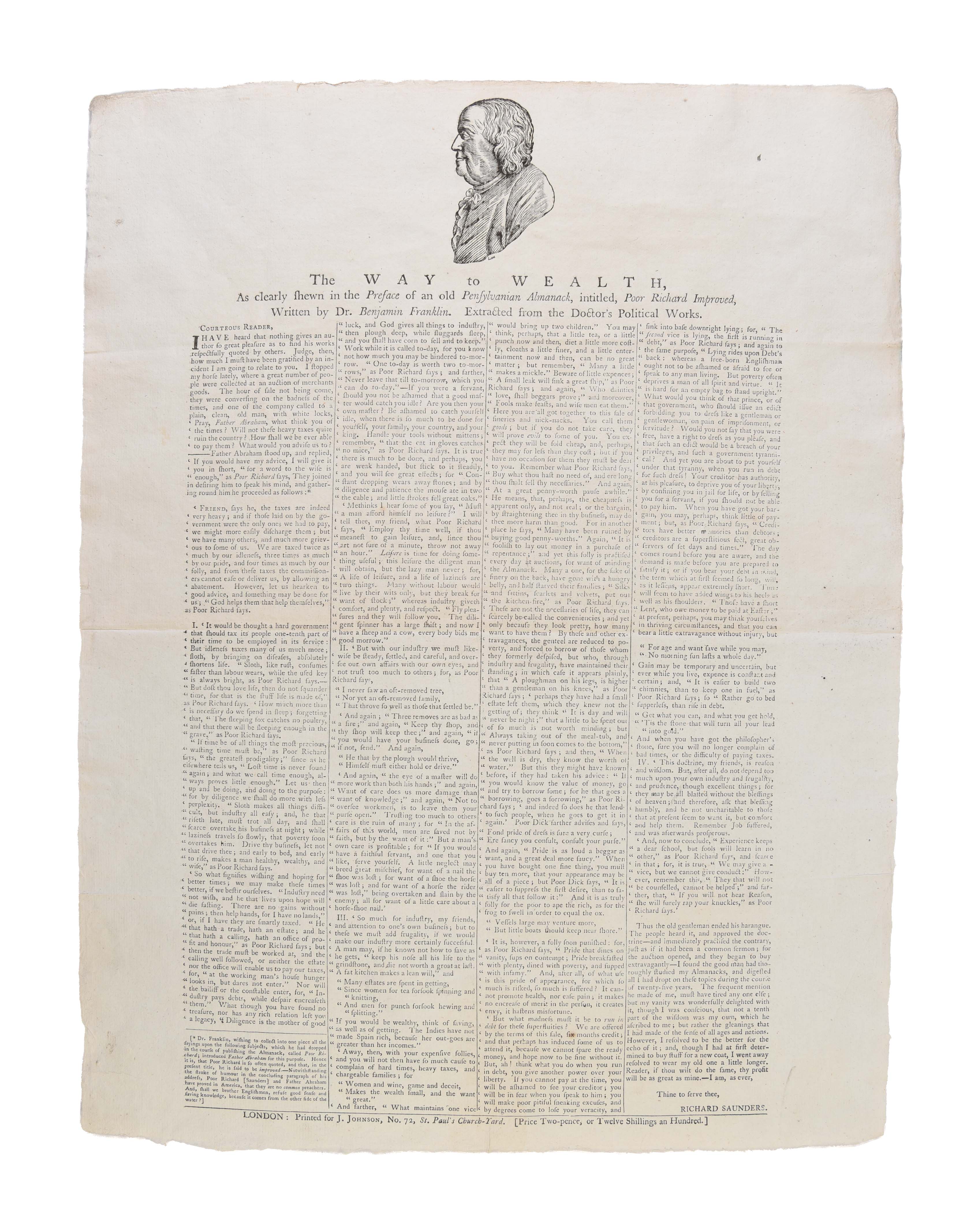
Letterpress broadside with text in four columns & woodcut ornament. Measuring 495 by380mm. Untrimmed, with old folds, very good. London, J. Johnson, No. 72, St. Paul’s Church-Yard, [ 1779]. £6,500
A lovely, crisp copy of Benjamin Franklin’s (1706-1790) famous text. This is the first broadside printing, preceding the first American broadside by six years. It first appeared as a preface to Poor Richard’s Almanac for 1758 and two years’ later as Father Abraham’s Speech. It is a compilation of about one hundred proverbs and aphorisms, many of which promptly entered the vernacular: “There are no gains, without pains”; “Early to bed, and early to rise, makes a man healthy, wealthy and wise”; and “God helps those who help themselves.” These are fine examples of his utilitarian wisdom, all centred around the theme of personal responsibility. By placing these sayings in the context of a dialogue between two characters, The Way To Wealth is “not simply a showcase designed to exhibit the best of Poor Richard. It is an essay carefully controlled to move the reader to action, and it is a prime example of Franklin’s rhetorical skill” (Gallagher). "By far the most frequently reprinted of all of Franklin’s works ... alternately called ‘Father Abraham’s Speech,’ ‘The Way to Wealth,’ ‘La Science du Bonhomme Richard,’ or, occasionally, a bastardized form of these titles. In his autobiography, Franklin says he created ‘the harangue of a wise old Man’ called Father Abraham for the preface of the almanac of 1758. This was the last Poor Richard Improved ... that Franklin composed himself, the twenty-sixth in the series; it has become the foundation of the Franklin image throughout the world. The Franklin Papers identifies 145 separatere printings... before the end of the eighteenth century, and this is by nomeans a complete list ...Franklin observed with pleasure that it was ’reprinted in Britain on a Broadside to be stuck up in Houses...’"
Offered by Maggs Bros., Ltd., booth A4.
TOLKIEN, J.R.R.
Autograph Manuscript “Concerning ‘The Hoard’". WITH: Autograph Manuscript Genealogical Tree "Kinship of the Half-Elven". WITH: Typed Letter Signed to Eileen Elgar
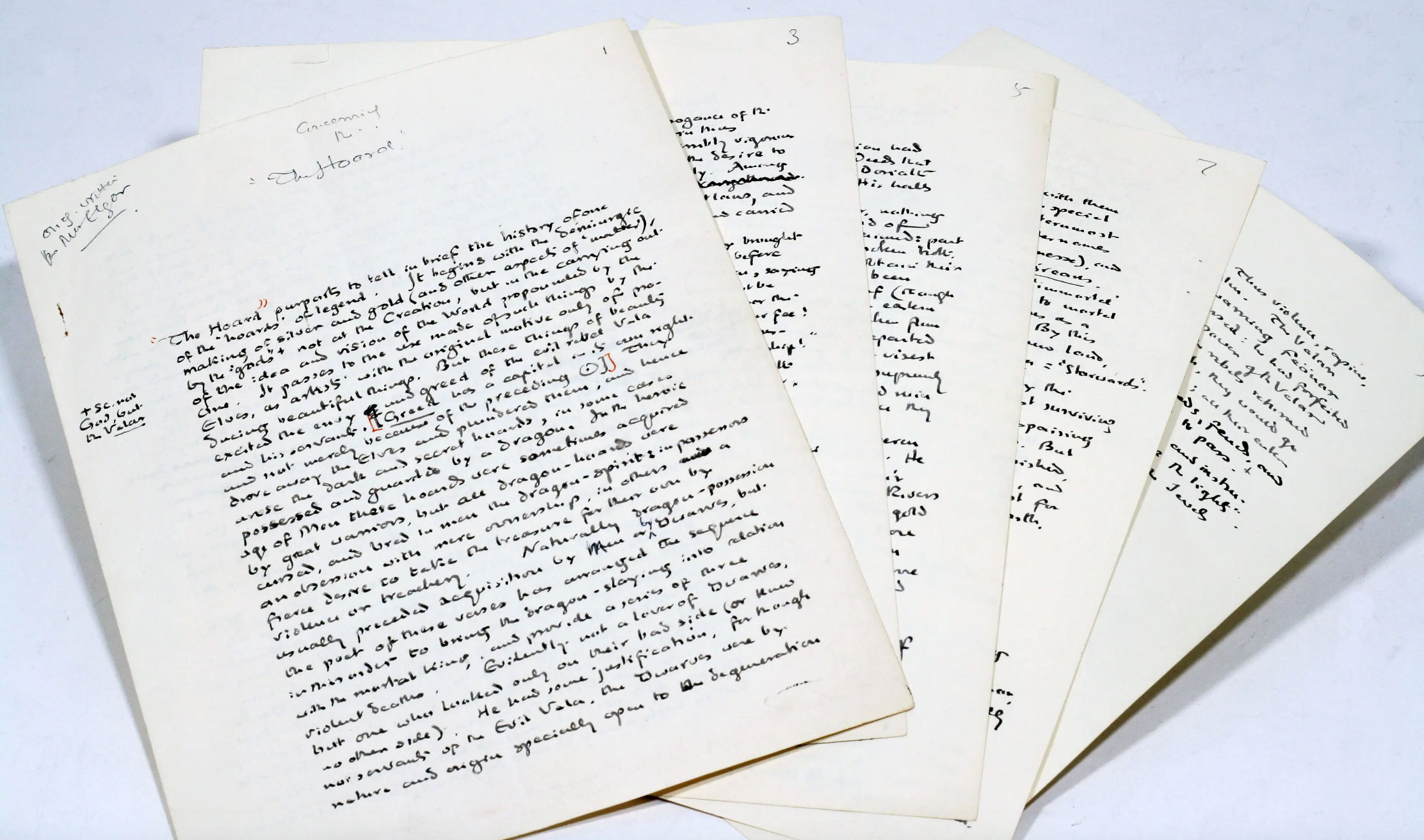
"all dragon-hoards were cursed, and bred in men the dragon-spirit"
– A MAJOR TOLKIEN AUTOGRAPH MANUSCRIPT ON THE CENTRAL THEMES OF HIS WORK AND CONTAINING A VARIANT HISTORY OF THE FIRST AGE; LIKELY THE MOST SIGNIFICANT MANUSCRIPT IN PRIVATE HANDS
– A VISUALLY STUNNING HAND-DRAWN CHART, “KINSHIP OF THE HALF-ELVEN,” TRACING THE GENEALOGY FROM FËANOR TO ELROND, ARWEN, AND ARAGORN
– A LONG, REVEALING LETTER TO EILEEN ELGAR PRESENTING THE MANUSCRIPTS, REFLECTING ON THE RECENT DEATH OF C.S. LEWIS AND DISCUSSING LITERATURE AND WRITING, INCLUDING A DETAILED ANALYSIS OF HIS MIDDLE-EARTH POEM “FASTITOCALON”.
“Concerning ‘The Hoard’” Manuscript:
Responding to Eileen Elgar’s letter about the meaning of Tolkien’s poem “The Hoard,” Tolkien here pens what he calls “a long screed” discussing the poem’s themes and its relationship to his writing. Only recently published in The Adventures of Tom Bombadil and Other Verses from the Red Book (1962), “The Hoard” was a bardic poem telling of an ancient elven hoard successively claimed by a dwarf, a dragon, and a man – each of whom is killed in consequence of his feverish greed for the hoard. Tolkien here calls The Hoard “one of the main strands in The Silmarillion,” and he explains that this work-in-process “concerns the great hoard of Nargothrond, which contained much of the treasure and works of Elvish art that had been preserved from the wreckage of the Elven-kingdoms and the assaults of the Dark Lord from his unassailable stronghold of Thangorodrim in the North.” In endeavoring to give his correspondent a fuller idea of “what my proposed book, The Silmarillion, is about,” Tolkien then proceeds to give a substantive account of the fate of this legendary hoard and its three great gemstones, the light-capturing silmarils magically crafted by Fëanor. The story arc and First-Age history Tolkien here charts differs in many subtle ways – especially in its rerouting of the Ruin of Doriath – from that found in The Simarillion and other related accounts of First Age history (e.g. the story of Nauglafring, as published in The Book of Lost Tales).
But Tolkien’s essay “Concerning ‘The Hoard’” is much more than a behind-the-scenes look into “The Hoard”. The nature of obsession, discussed so vividly in “Concerning ‘The Hoard’”, is at the core of Tolkien’s most celebrated works, namely: The Hobbit, The Lord of the Rings and The Silmarillion, and “Concerning ‘The Hoard’”provides vital insight into the dramatic underpinnings of these works.
After explaining in this manuscript how “dark and secret hoards” were originally formed and indicating that such hoards are very often “possessed and guarded by a dragon,” Tolkien affirms that such “dragon-hoards were cursed, and bred in men the dragon-spirit: in possessors an obsession with mere ownership, in others a fierce desire to take the treasure for their own by violence and treachery.” Beyond the insight such a “dragon-spirit” offers for the immediate analysis of The Silmarillion – where even the noblest of heroes succumb to its obsessive poison and go to extreme lengths to obtain the silmarils – we see the “dragon-spirit” driving the actions surrounding the Arkenstone in The Hobbit and The One Ring in The Lord of the Rings. Tolkien’s essay gives new meaning to the dragon Smaug’s role in The Hobbit (and the reveling delight he takes in his hoard) and it further helps us understand the basis for Thorin Oakenshield’s insatiable avarice and his fixation on recovering a treasure that he had never seen. In The Lord of the Rings we see Bilbo’s reluctance to relinquish the One Ring and many of the early pages are occupied by Gandolf’s explication to Frodo of how the Ring has affected its bearers. And who, after all, is Gollum but one who succumbed entirely to the “dragon-spirit”?
A major unpublished essay, “Concerning ‘The Hoard’” is a highly important addition to Tolkien’s known work. Broadening the characters and events of Middle-earth history, this manuscript affords us insight into Tolkien’s evolving conception of the First Age. This manuscript was unknown to Christopher Tolkien at the time he was piecing together The Silmarillion, and one can only imagine the contribution its text might have made to that work. But even beyond its significance for The Silmarillion, this manuscript offers a penetrating view of how Tolkien conceived the “dragon-spirit” that is a driving force in all his major works. Encapsulating as it does the core history and thematic at the heart of Tokien’s legendary works, “Concerning ‘The Hoard’” is, to the best of our knowledge, the most significant Tolkien manuscript in private hands.
"Kinship of the Half-Elven" Genealogical Tree:
Tolkien’s 1964 letter to Eileen Elgar also included the offered autograph genealogical tree entitled “Kinship of the Half-Elven”. Tolkien was in the habit of creating itemized documents to help him keep track of the rich layers of detail present in his complex narrative structures. This particular tree begins with Fëanor in the early days of the First Age and traces his descent through the House of Hador and the House of Bëor to the Third-Age figures – Elrond, Arwen and Aragorn – we encounter in The Lord of the Rings. The chart is a stunning visual companion to his work, meticulously and stunningly drawn with black, green, and red ink and pencil.
Letter to Eileen Elgar:
Tolkien’s letter of March 5, 1946, presenting the chart and manuscript to Eileen Elgar, begins on a somber note, with Tolkien explaining that he had been through some troubling times, highlighting that “The death of my friend (C.S. Lewis — whom I do not think you have confused with C.D. Lewis) was the first blow…” He then discusses “Concerning ‘The Hoard’, hoping that it will give Elgar a better idea of what “my proposed book, ‘The Silmarillion’ is all about.” The rest of the letter is a detailed discussion of various aspects of writing and publishing: complaining about proofreaders’ attempted changes to passages in The Lord of the Rings, an analysis of certain phrases with an explication of Chaucer and the nature of poetic meter, and a detailed analysis of his Middle-earth poem, “Fastitocalon,” that had recently appeared in The Adventures of Tom Bombadil. It is both a highly literary and a deeply personal letter demonstrating the deep respect Tolkien held for Elgar.
_____
TOLKIEN, JOHN RONALD REUEL. Autograph Manuscript “Concerning ‘The Hoard’”. Oxford: n.p., [c.1946]. [Dimensions], 9 pp. on 5 leaves. Annotations and corrections in red ink, black ballpoint and pencil.
with
TOLKIEN, JOHN RONALD REUEL. Typed Letter Signed to Eileen Elgar, 5 March 1946. On Tolkien's embossed letterhead: "76 Sandfield Road" Excerpt printed in The Letters of J.R.R. Tolkien, ed. Humphrey Carpenter and Christopher Tolkien (Boston: Houghton Mifflin, 1981), no. 255.
with
TOLKIEN, JOHN RONALD REUEL. Autograph Genealogical Tree “Kinship of the Half-Elven”. [Oxford]: n.p., [c.1964]. [Dimensions], 1 p.
Price: $375,000 .
Offered by Manhattan Rare Books, booth B4.
LEVI, Eliphas, pseud. for CONSTANT, Alphonse Louis
La Sagesse des Anciens avec le commentaire des rabbins redacteurs du Second Sohar …livre dit du juif Abraham et de Nicolas Flamel, retabli traduit et commenté par Eliphas Levi. [France] 1859.
.gif)
4to. 213 x 165 mm. 125 unnumbered leaves. Manuscript in French on paper in black and red ink in a single consistent cursive hand, about 13 lines per page. With 49 watercolor figures, some heightened in gold, 8 painted vignettes in bistre, 3 uncolored text drawings. Bound in contemporary wrappers over embossed boards (front board detached). Bookplate of Christiane Buisset, founder of the Eliphas Lévi Circle and Grand Mistress of the Order of Memphis. In excellent condition. $ 85,000.00
Original alchemical manuscript, unedited and never published, from the hand of the most famous occultist in history. In the first part of the text, Levi describes 19 steps of the alchemical process for creating the Philosopher’s Stone, often quoting earlier alchemy manuals by Nicolas Flamel, Philipp Müller, Hermes Trismegistus, and the Aesch-Mezareth, a fragmentary Hebrew Cabbalistic treatise. After the instructive, Levi provides his “notes” which simplify and elucidate the complicated chemistry. Each chapter opens with an alchemical emblem and explanation of its symbolism and imagery.
Levi’s course in alchemy here begins with an allegory about chaos; the matter of the universe at the dawn of time was a jumble that had to reach equilibrium in order to achieve vegetation, and so the raw materials of alchemy must be collected and separated in harmony for the process to work. He then describes the chemicals and minerals to be used, how to prepare the “philosophic fire” for distillation, the preparation of the philosopher’s stone, and the changes that must be made to the stone for transformation into gold and silver. He likens the process to human reproduction, with male and female agents that must be joined then divided for generation to take place. In his words, “when our earth began in darkness and could absorb these drops of bright silver, so she has designed at that second the male and the female, the marriage consummated between our mercury and our water, between our sun and our moon” (tr.).
Although the materials he describes are commonplace elements in nature, they must be gathered and tempered under very specific conditions. For example, the potassium nitrate dissolved in water that forms the base solution must be harvested in May, because then it will contain the virtues of both the sun and moon. He stresses that the containers used must be made of brass or bronze, and that the entire process must take place when the sun is in Aries. In the dedication Levi states that “it is useless to apply to the study of Hermetic philosophy if we do not first understand that by sulfur, salt and mercury the ancients did not mean the substances which bear the same names in our modern chemistry” (tr.).
Throughout his instructions Levi references ancient mythology and biblical symbolism through numerology. Seven, for example, represents the seven colors of the universal prism, the seven notes of the musical scale, and the seven planets recognized by ancient sages. He also describes the steps of the alchemical process as cards in the tarot deck and notes how their emblematic imagery corresponds to the chemical stages.
This first part of the manuscript concludes with a curse signed with the author’s full name. It dictates that “…the foodhardy operator who was not versed in the Sage Kabbala and who will want to work without comprehending the twelve mute figures, the conversions of the tetragram, the mysterious names of the angels and the trigrams of Jo-Hi may be assured in advance, if by misfortune this book fell into his hands, that he will lose his time and his efforts” (tr.)
The second part of the manuscript contains seven pen and bistre emblems roughly copied from Nicolas Flamel’s alchemical text Les Figures du Juif Abraham, a collection of mysterious vignettes that supposedly instruct the adept reader on how to make a philosopher’s stone. Levi explains each image in depth in his commentary following the illustrations.
This manuscript is dedicated to the Polish aristocrat Count Andrzej Jerzy Mniszech, son-in-law of Madame de Balzac, Honoré’s wife. Mniszech was a talented painter, prolific collector of fine art, and amateur entomologist. He emigrated to Paris in 1854 and became friends with Levi and his circle of Hermetic researchers. In a letter written in the 1860s, Levi called Mniszech “a man of duty and reason, in love with science.” This is likely why Levi made him the sole heir of his magical manuscripts and instruments.
Levi (1810-1875) was born Alphonse Louis Constant; his pen name is a Hebrew anagram. He attended the seminary of Saint Sulpice with the intention of becoming a Catholic priest, but he abandoned that path for a secular lifestyle. Disillusioned by governmental dictatorship and his own poverty, he turned to the occult late in life. His first major work was Dogma and ritual of high magic in 1855. This influential text explored magical practices, symbolism, and the spiritual dimensions of existence. He here introduced the concept of the “Baphomet,” an esoteric symbol representing the union of opposites, often misunderstood and misinterpreted in later years. His second significant work, The key of the mysteries (1861) further expanded on his ideas and delved into the secrets of magical rituals and spiritual transformation.
Apart from his literary contributions, Levi was an adept practitioner of ceremonial magic. He claimed to have had personal experiences with the supernatural and engaged in rituals to commune with spiritual entities. Levi’s mystical practices were deeply rooted in the belief that true knowledge and enlightenment could be attained through the understanding and manipulation of spiritual forces.
Despite his influence, Levi faced criticism and skepticism from both religious and scientific communities. His unconventional ideas and mystical pursuits led to conflicts with authorities, and he faced challenges throughout his life. Nevertheless, his impact on the occult revival of the nineteenth century cannot be overstated.
Eliphas Levi passed away on May 31, 1875, leaving behind a legacy that continues to shape contemporary occult thought. His efforts unveiled the elusive and clandestine modalities of magic, Cabbala, and Hermeticism to Western society and influenced Aleister Crowley and Helena Blavatsky among many others. His writings and teachings continue to inspire countless individuals in the realms of mysticism, symbolism, and ceremonial magic, making him a revered figure among those who seek to explore the hidden dimensions of existence.
Offered by Rootenberg Rare Books, booth B24.
For full details about the 64th New York International Antiquarian Book Fair or to purchase tickets, click here...


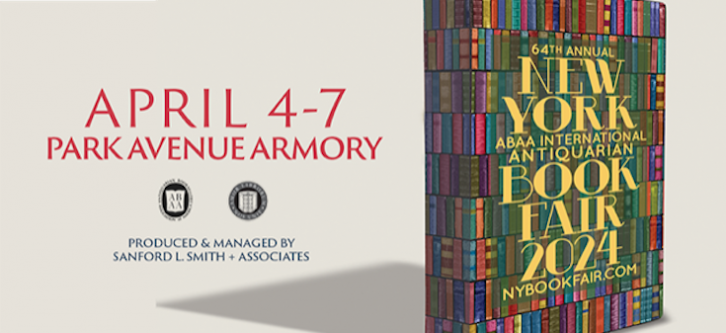
.JPG)


















.jpg)






.gif)